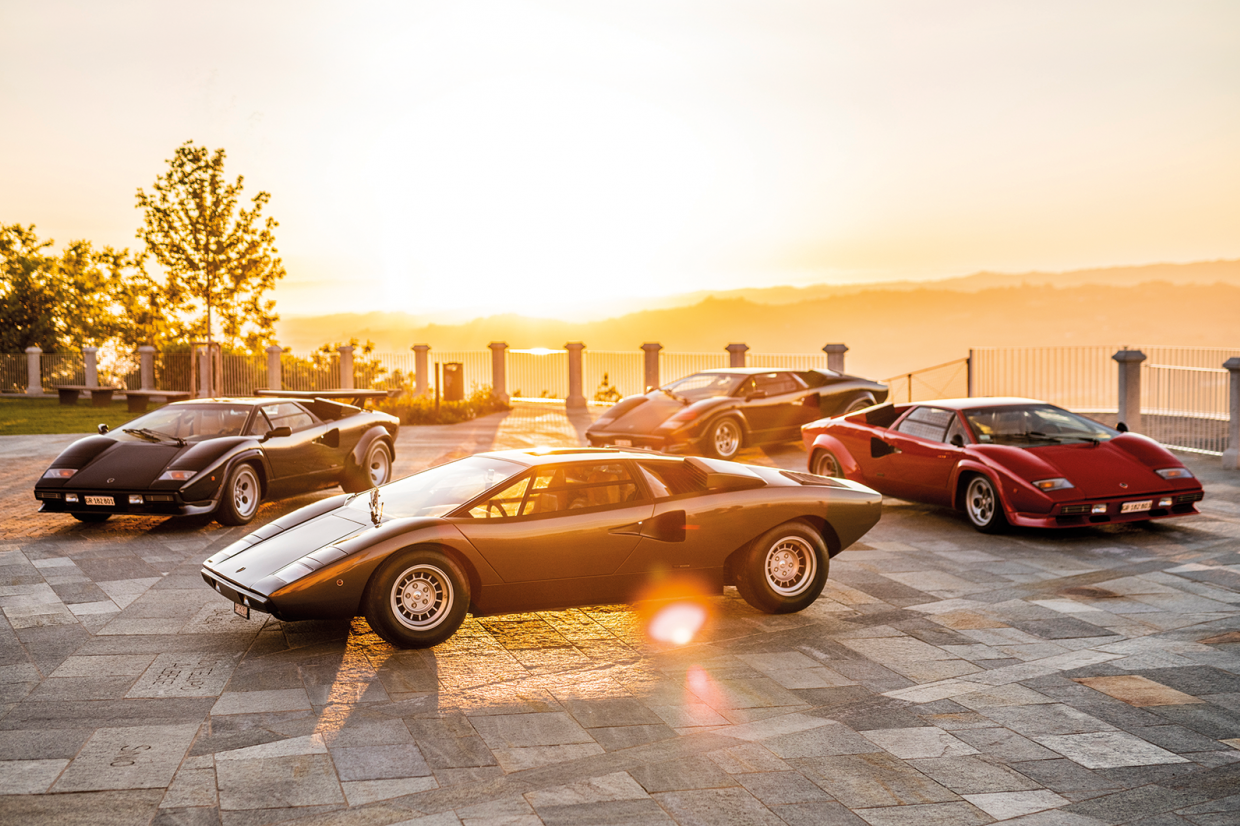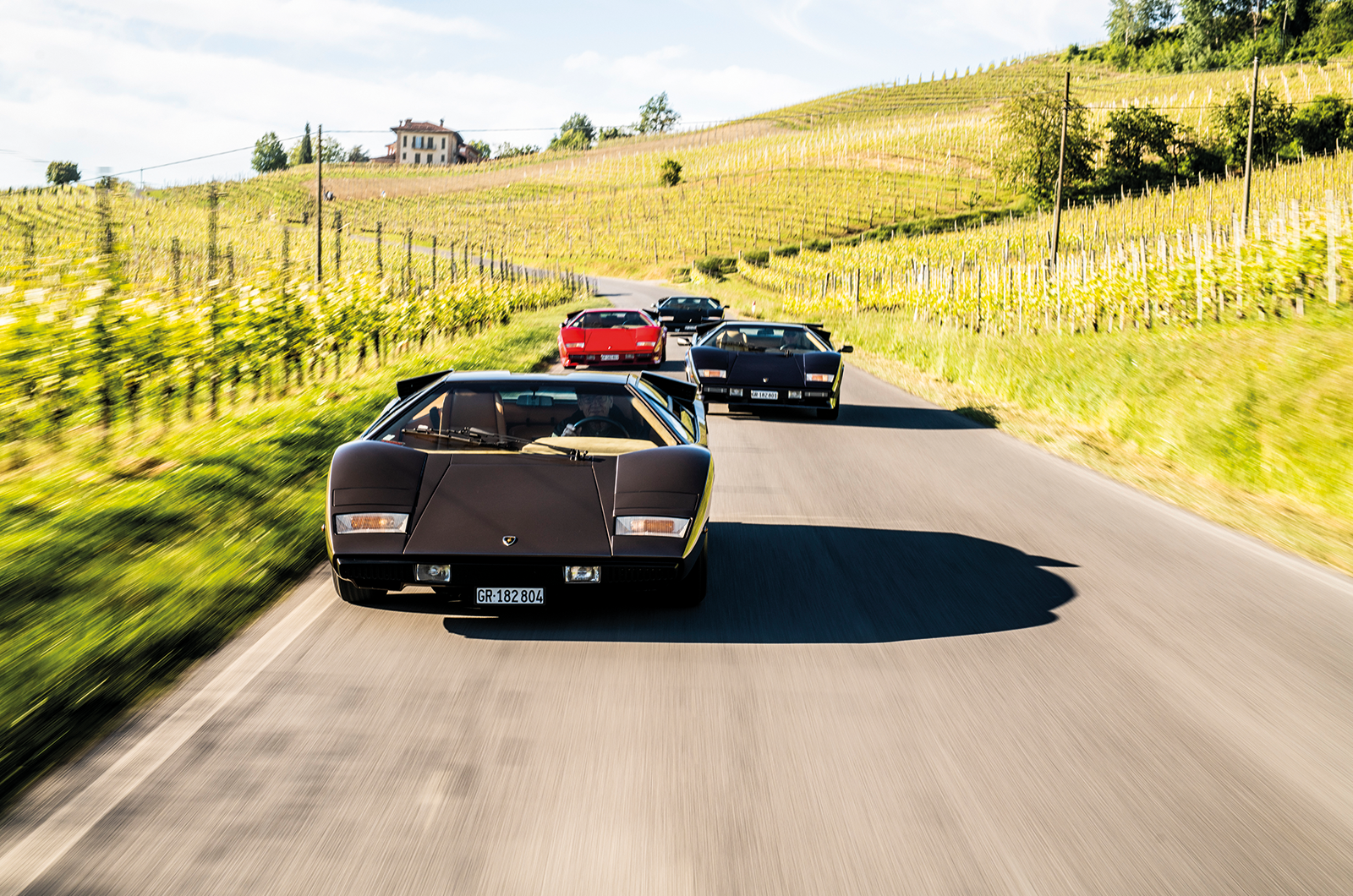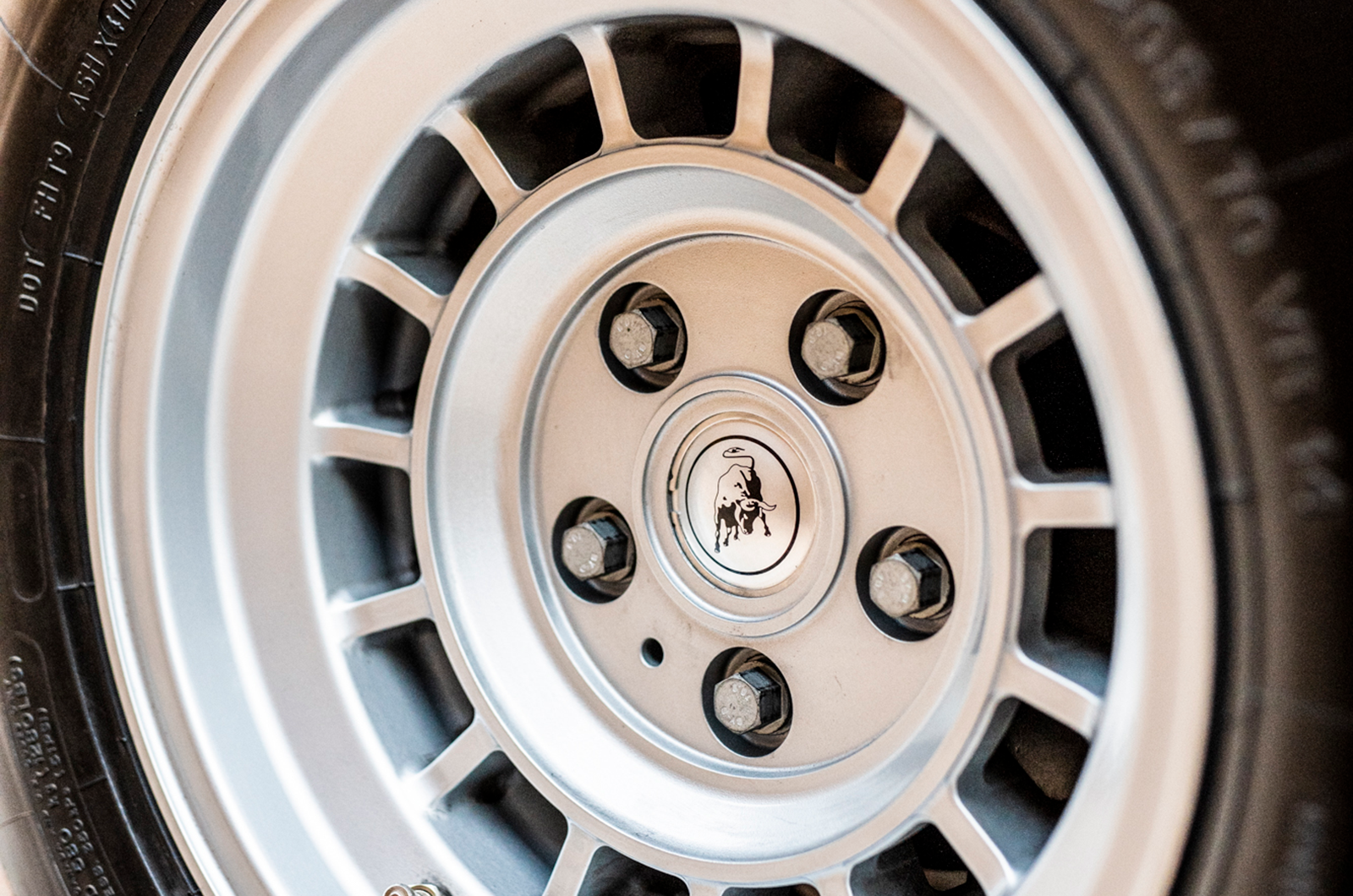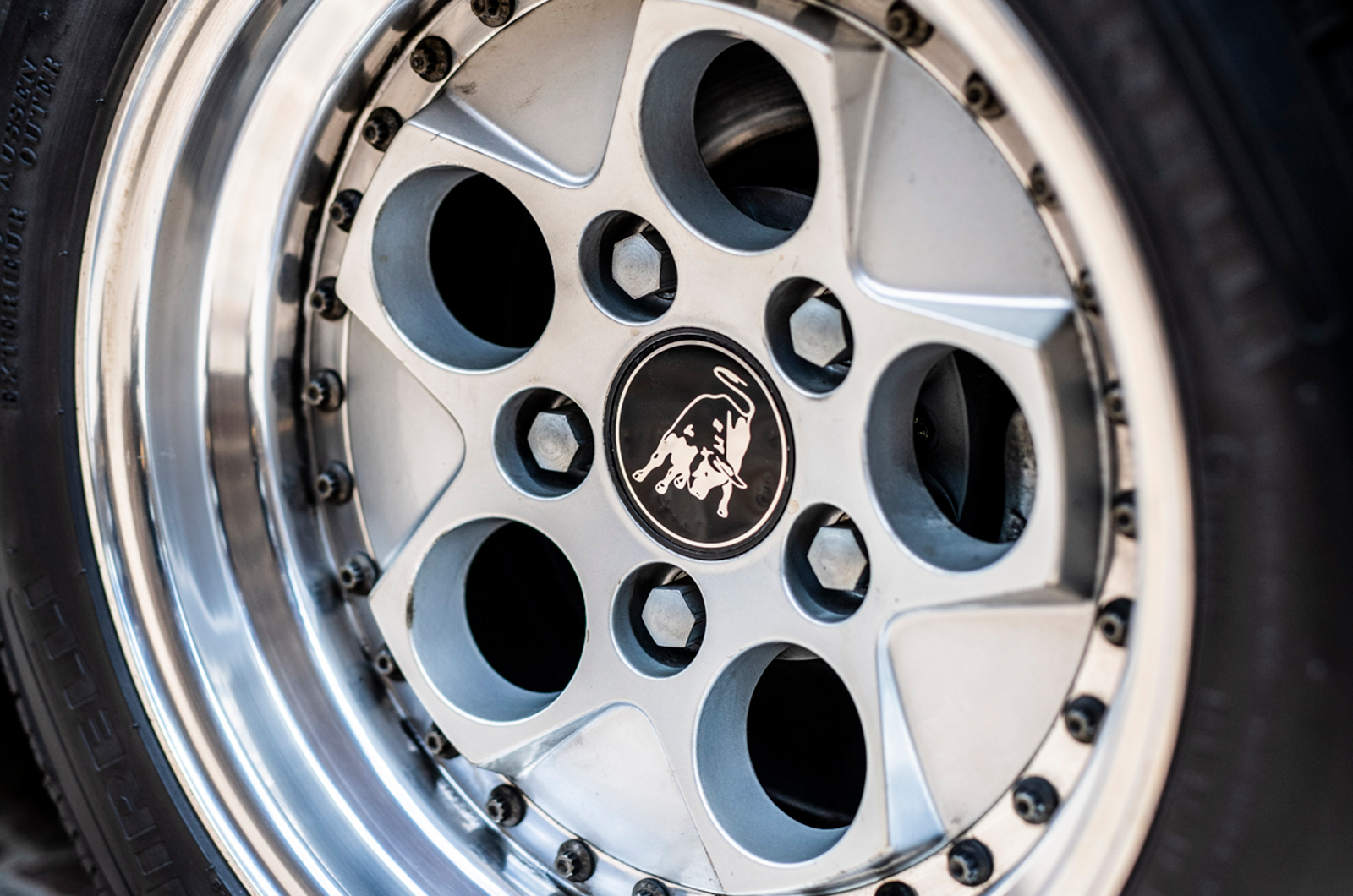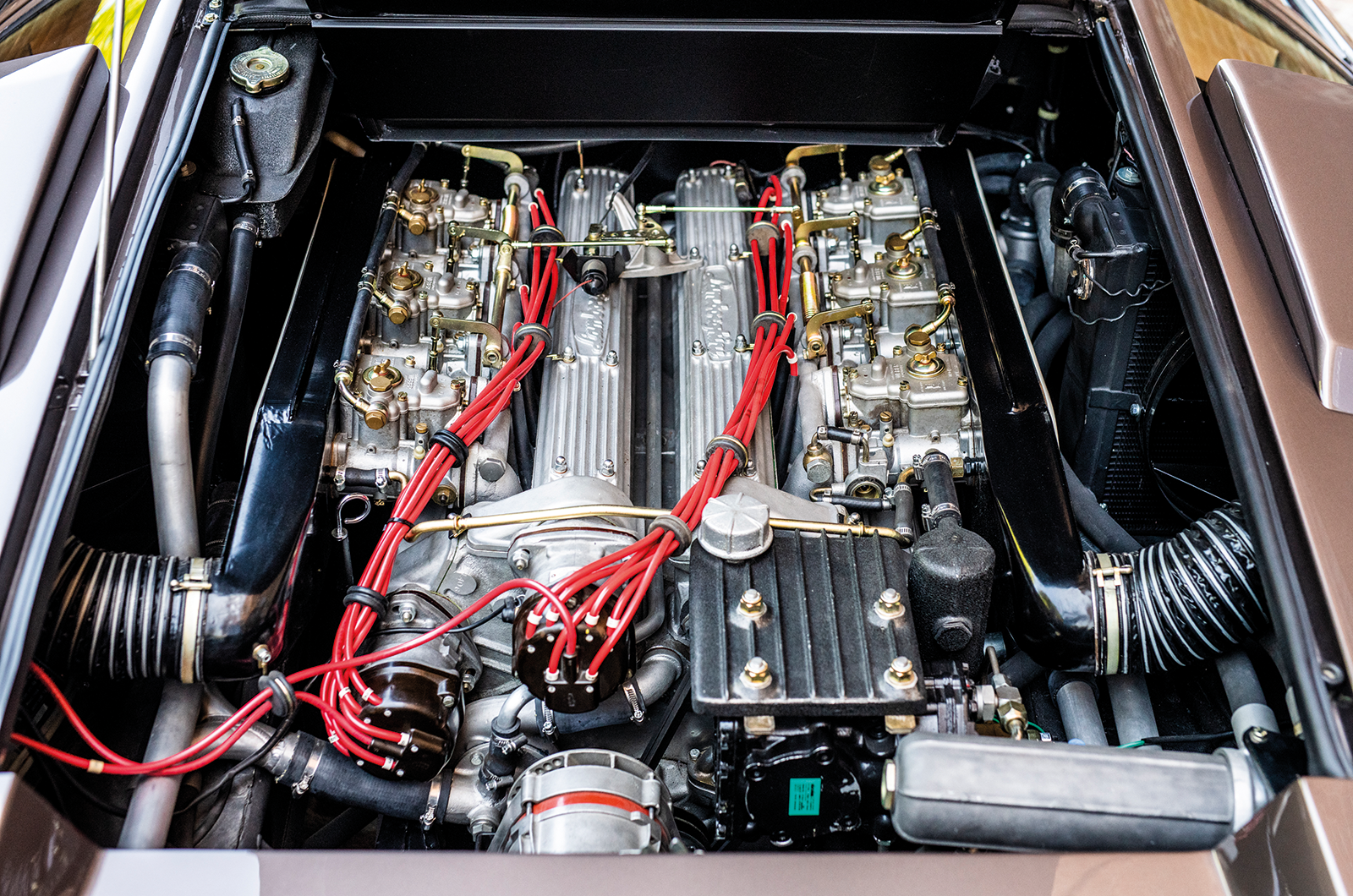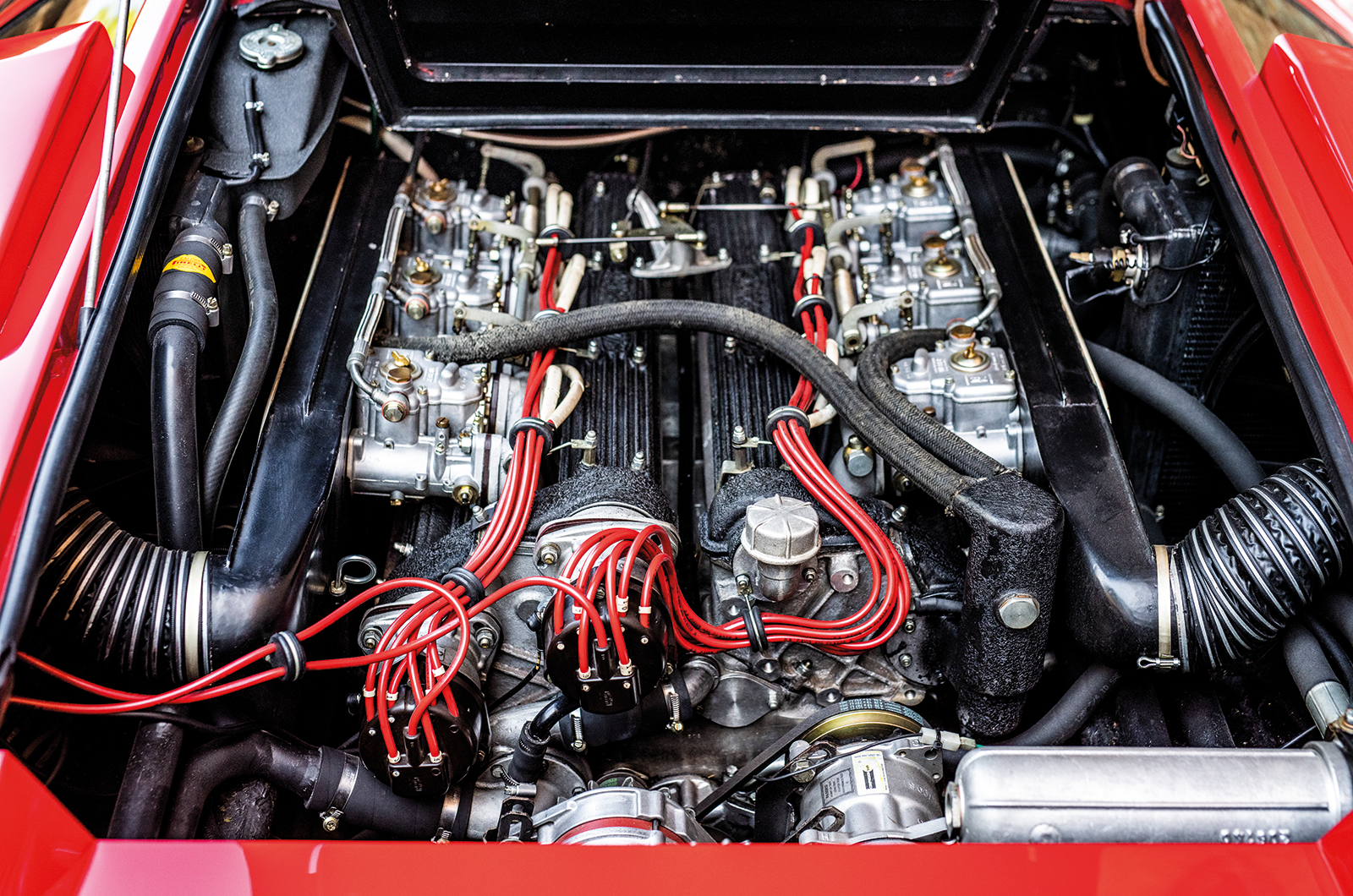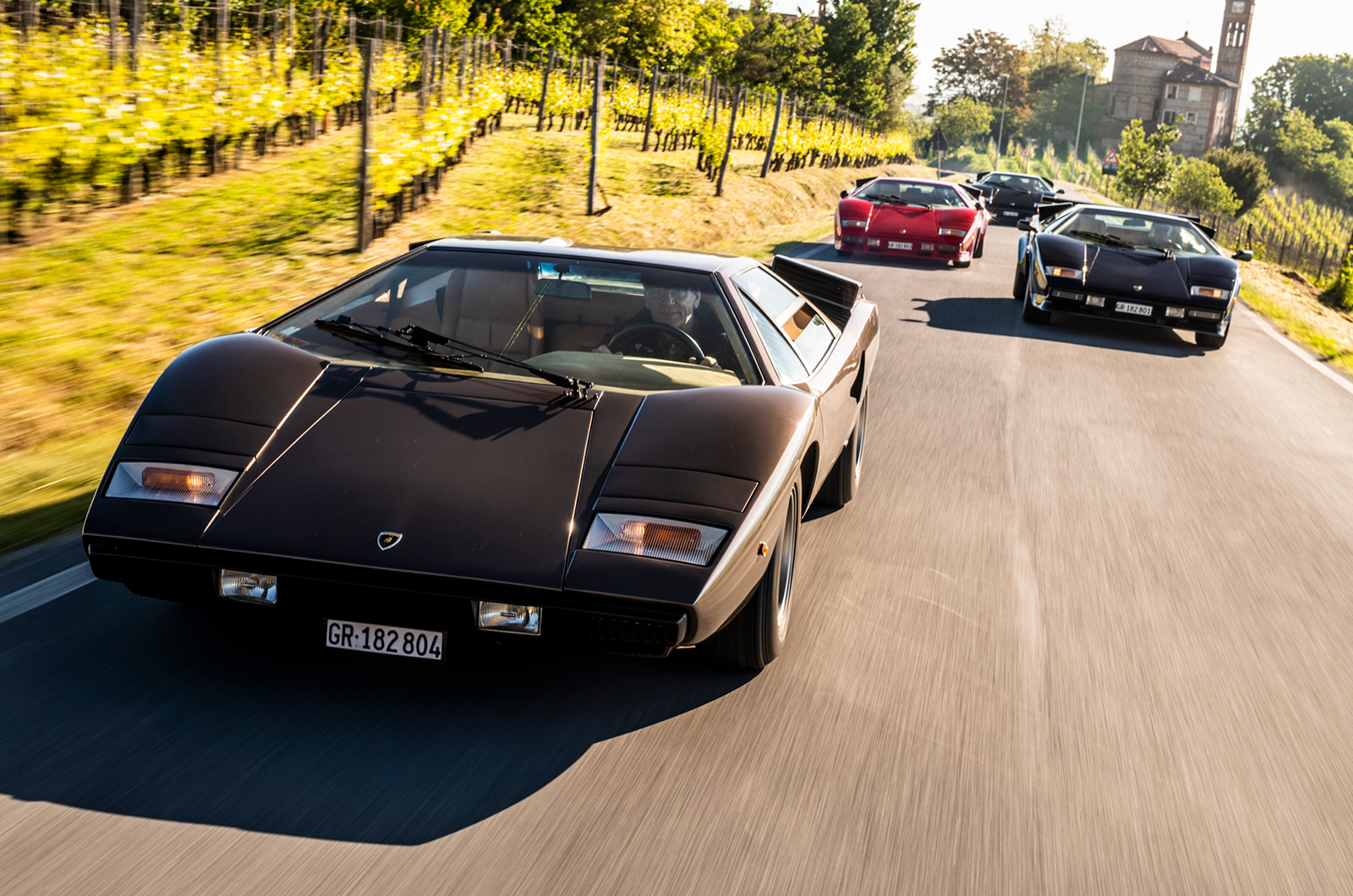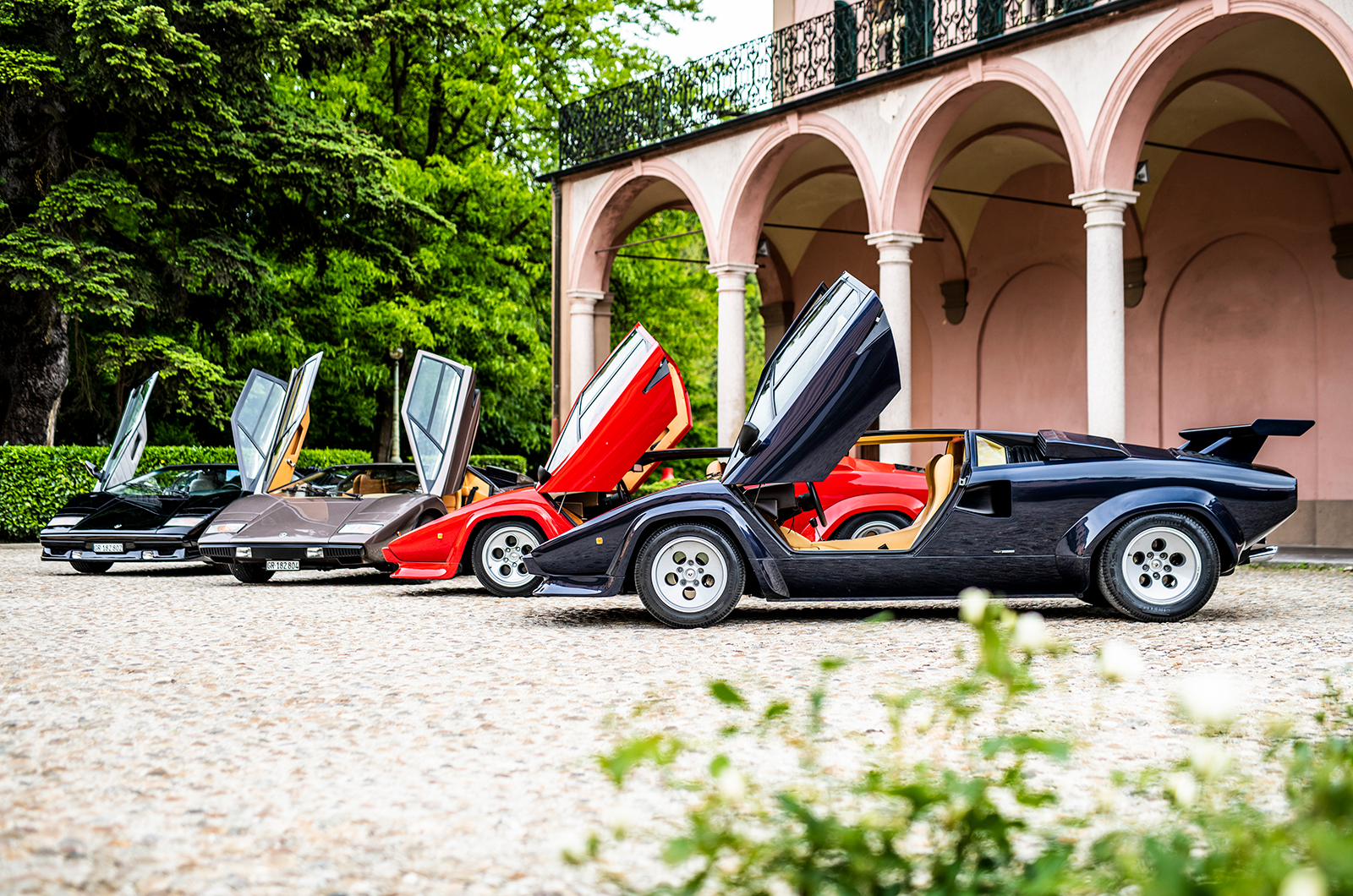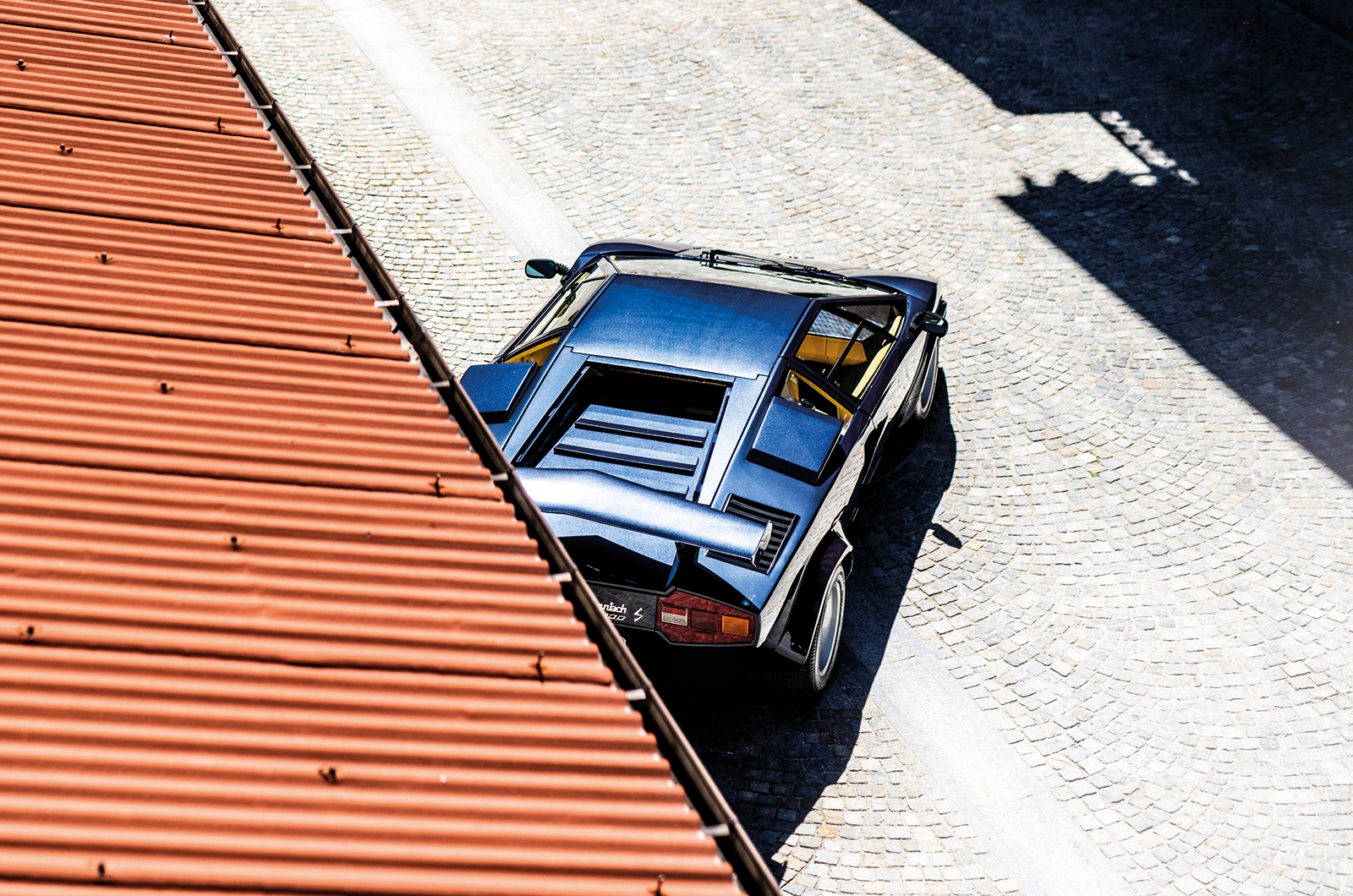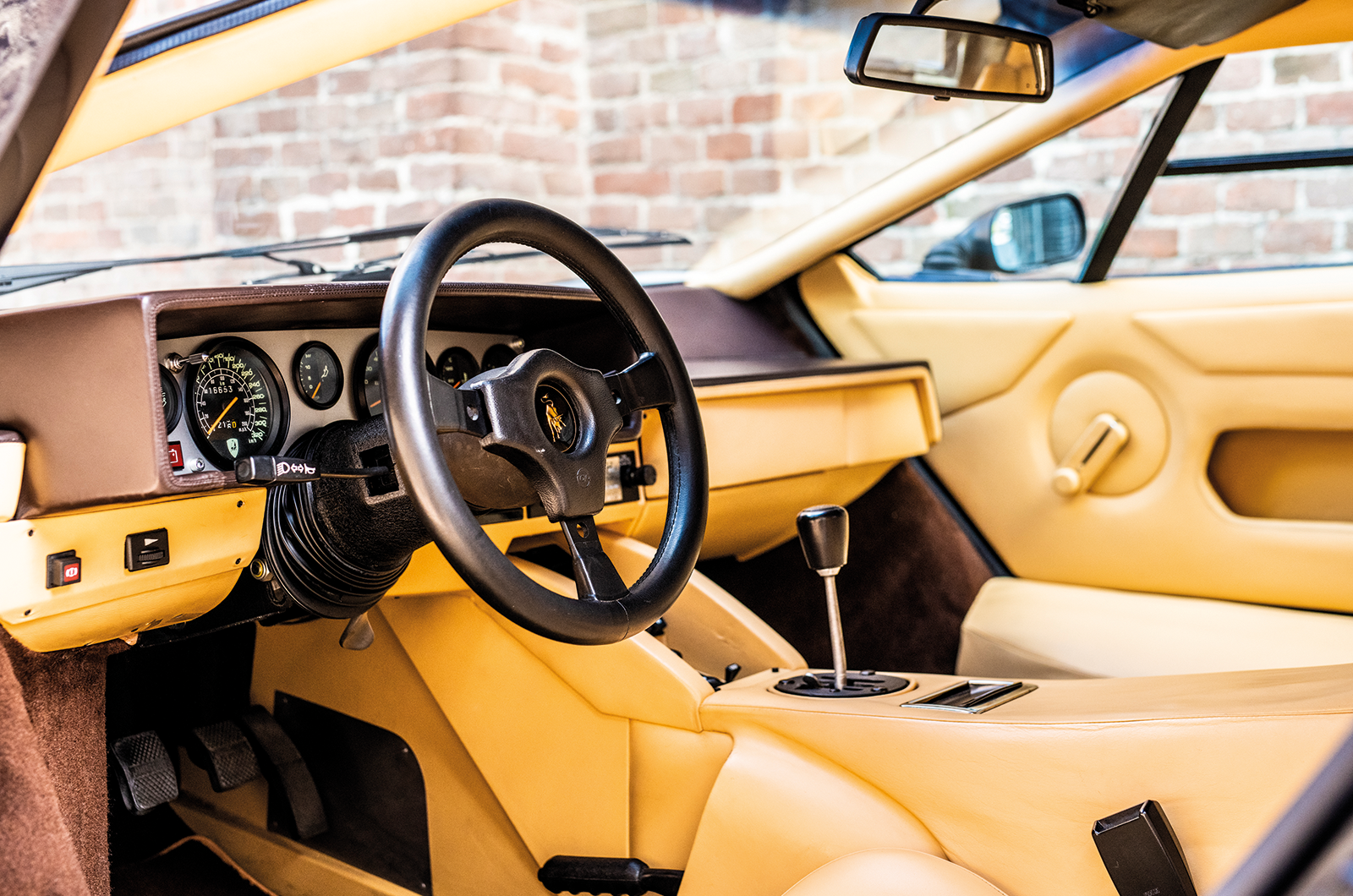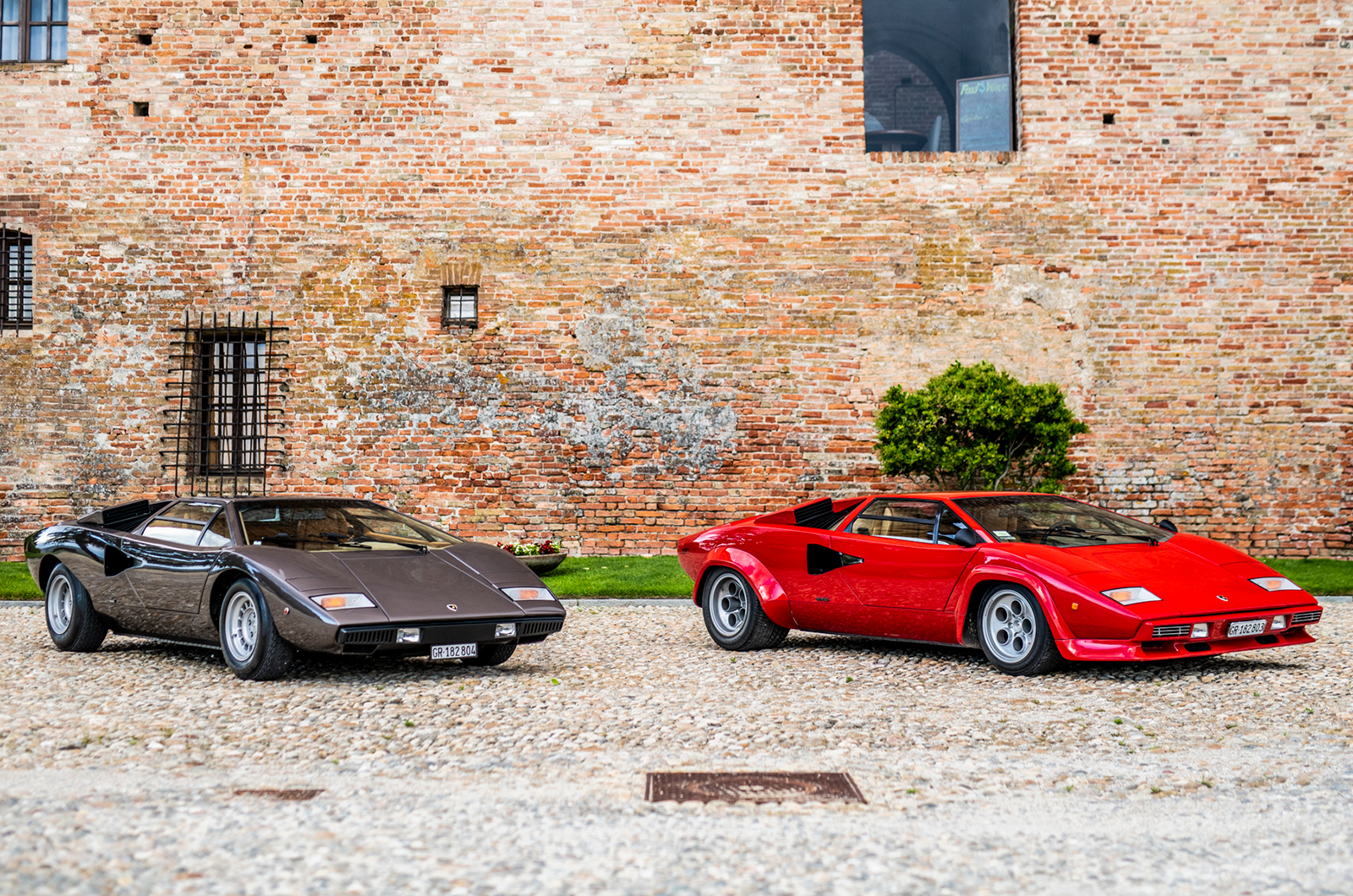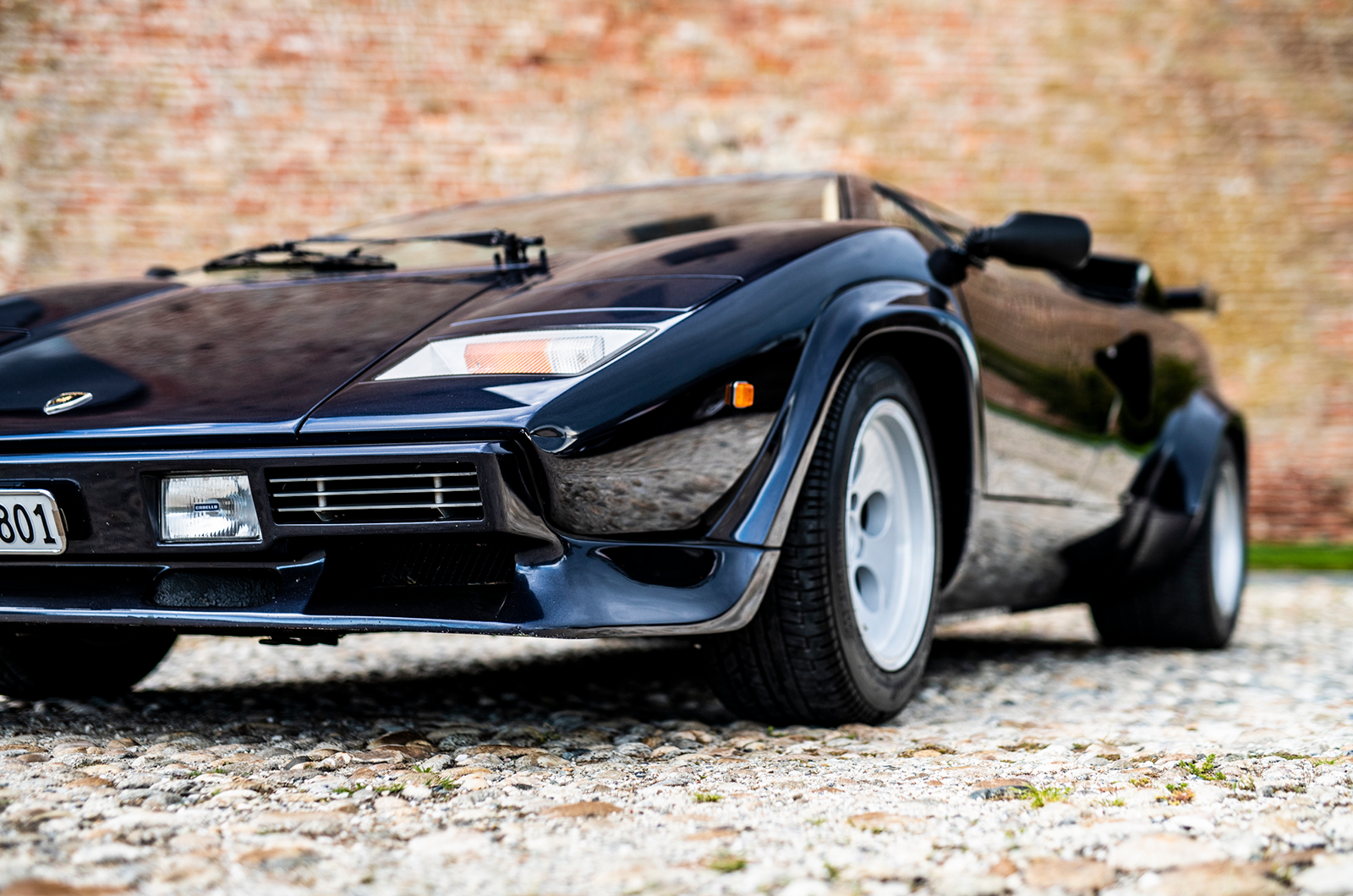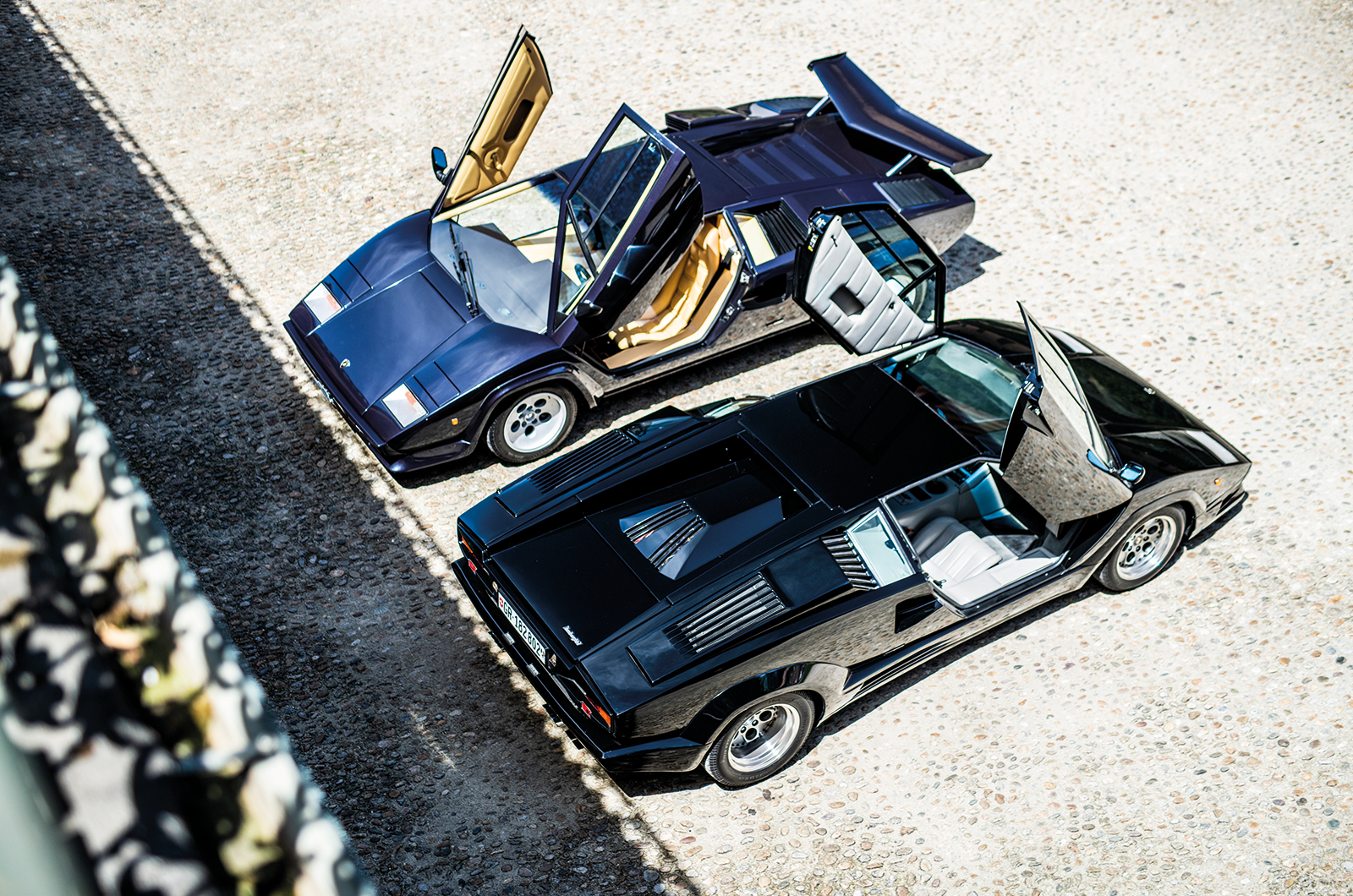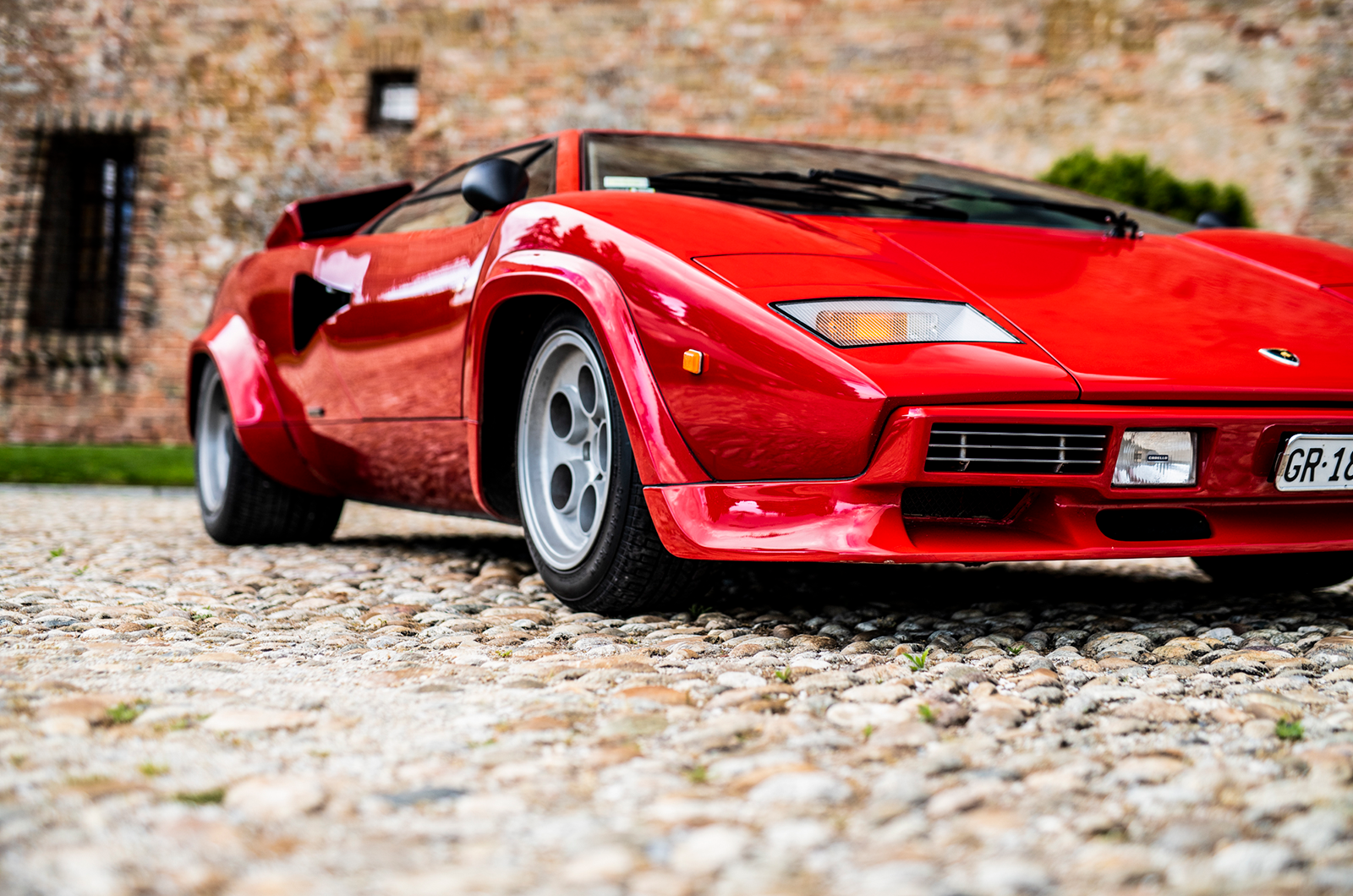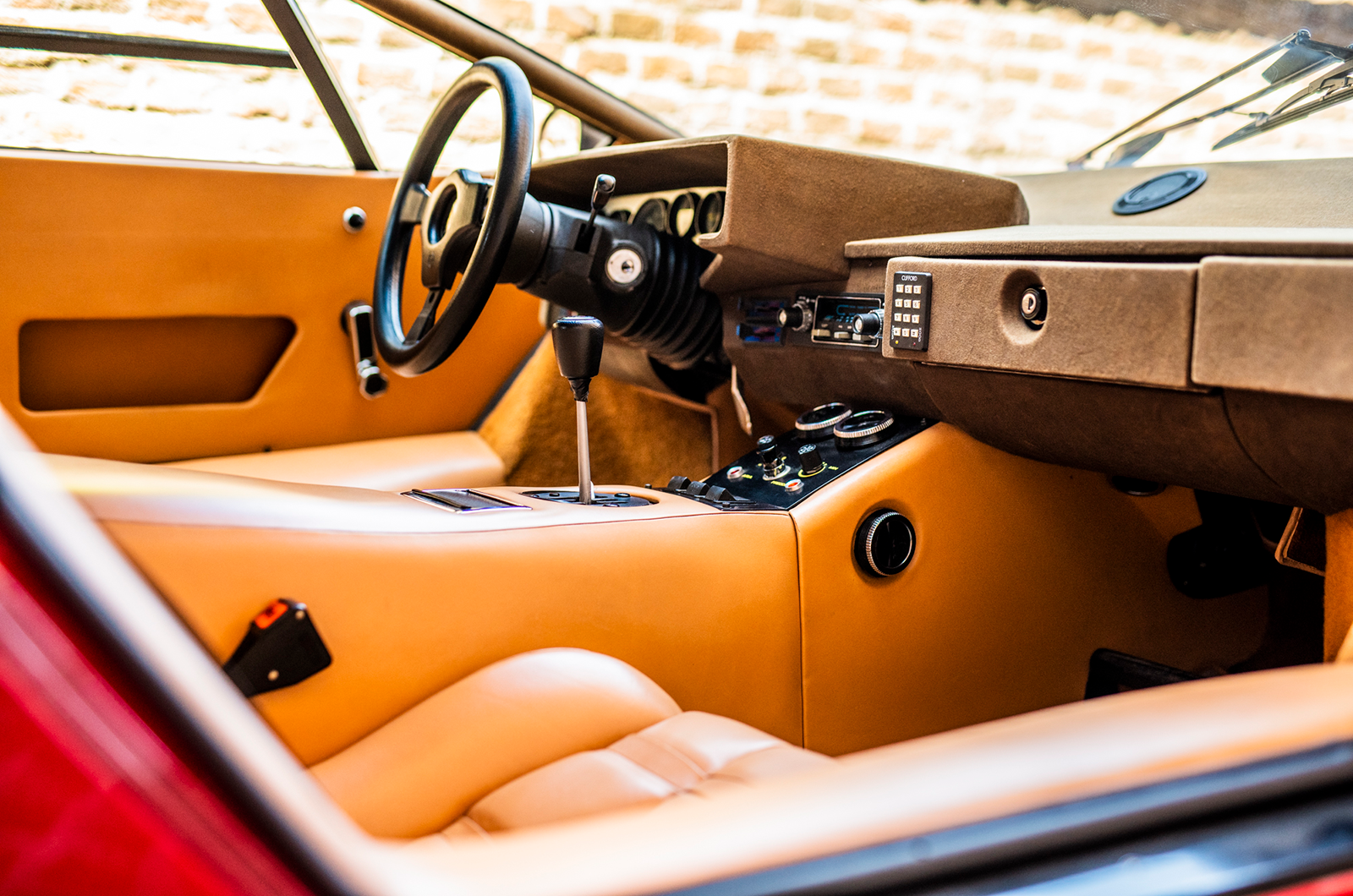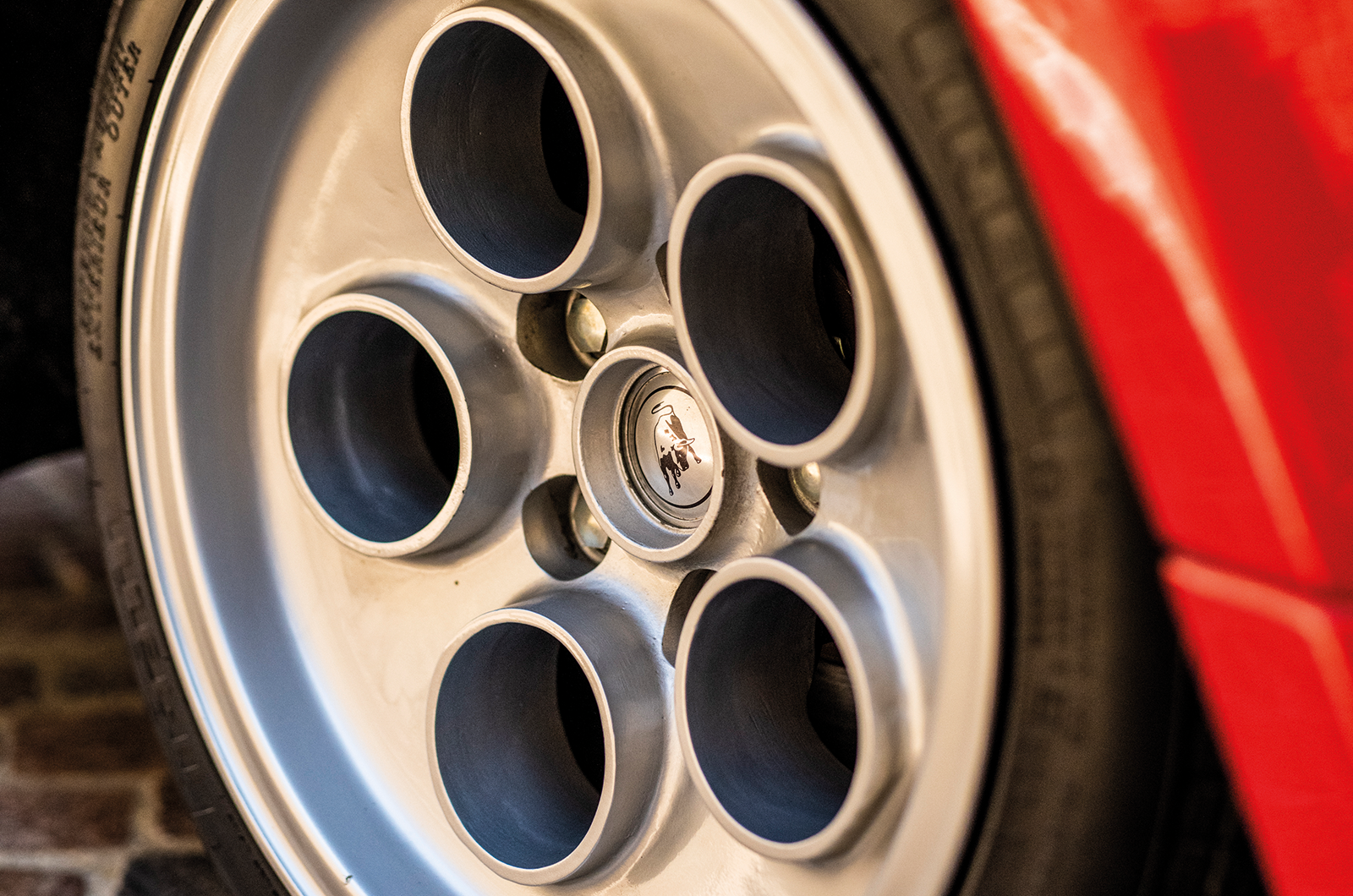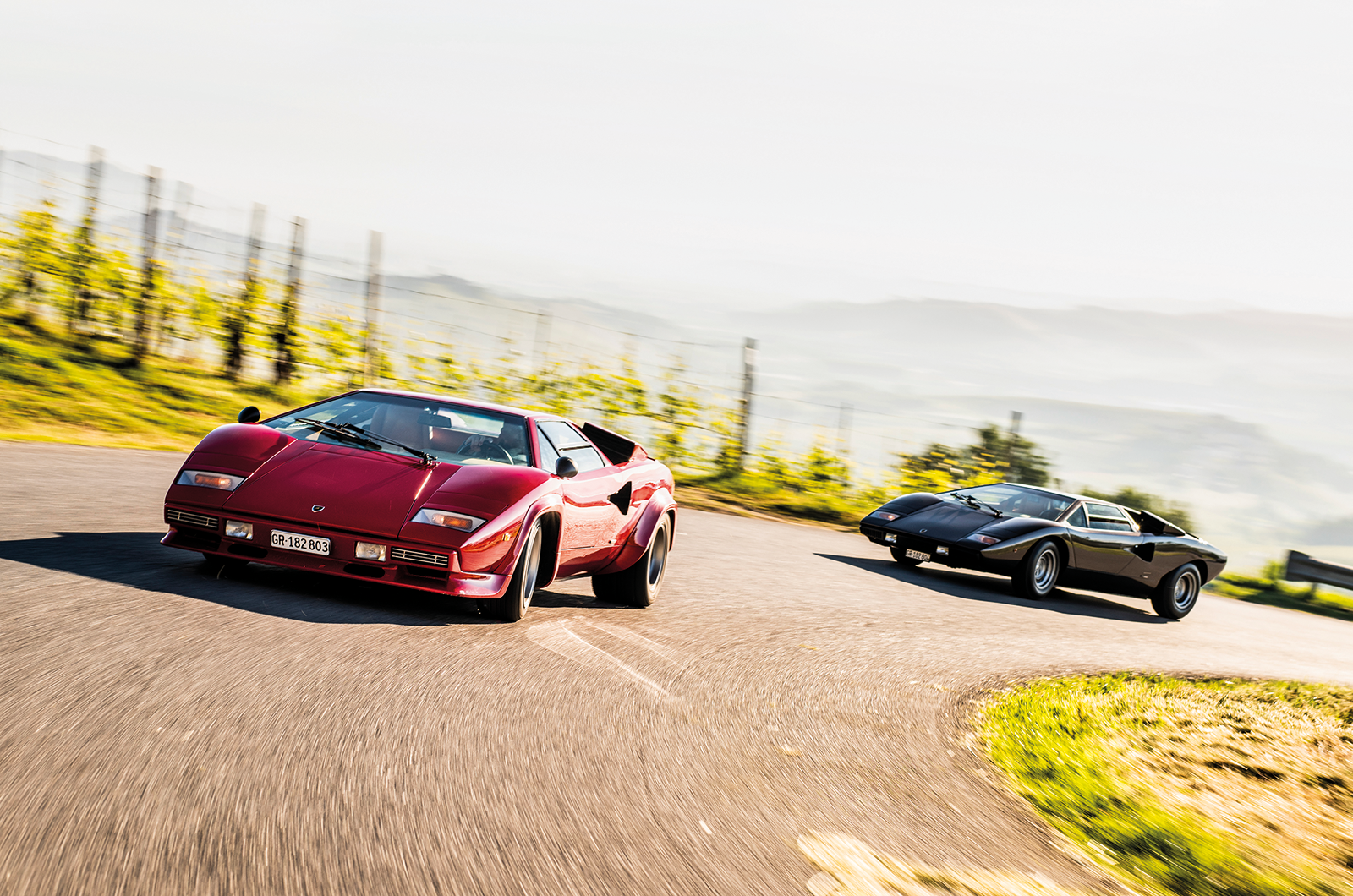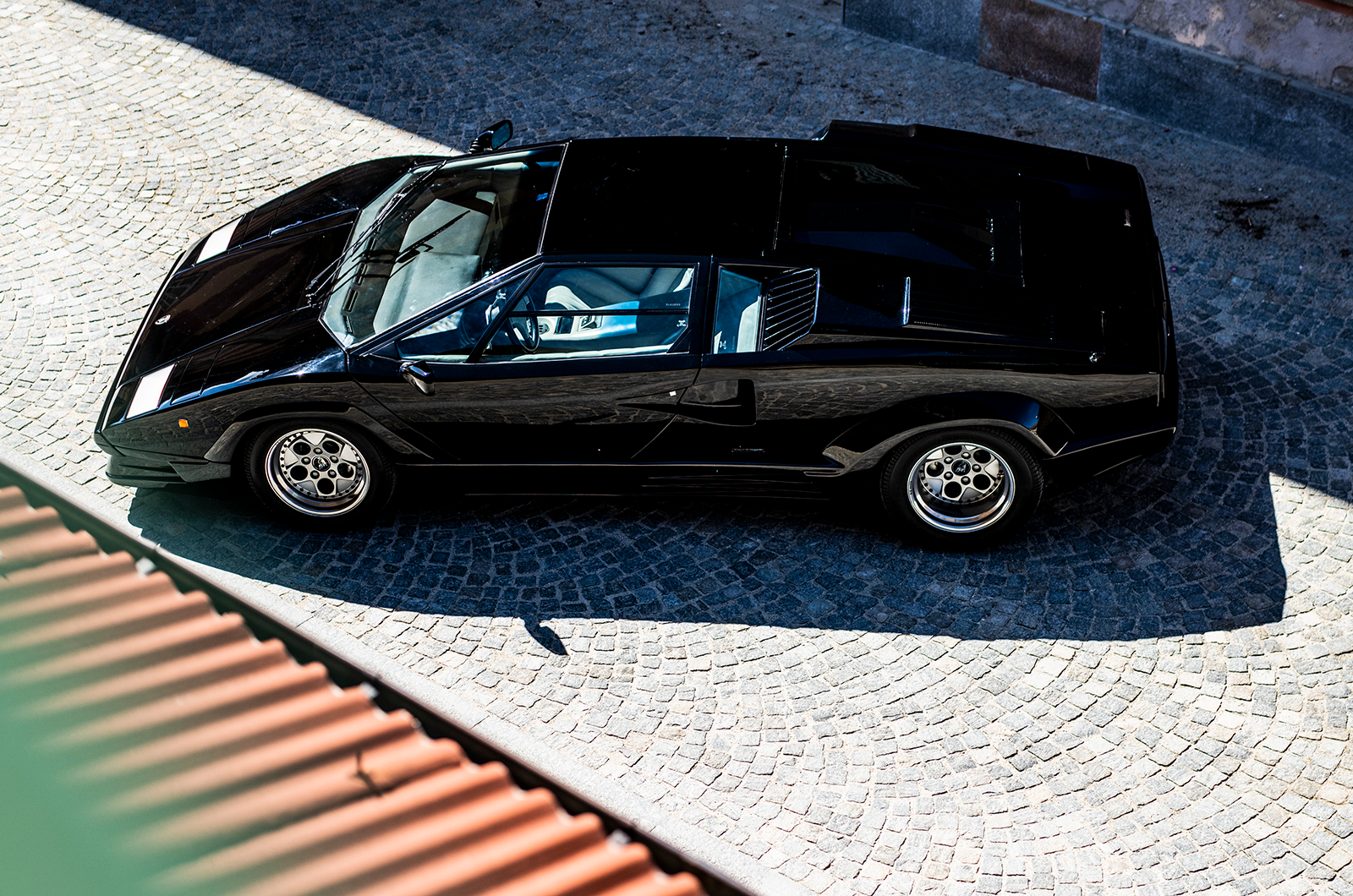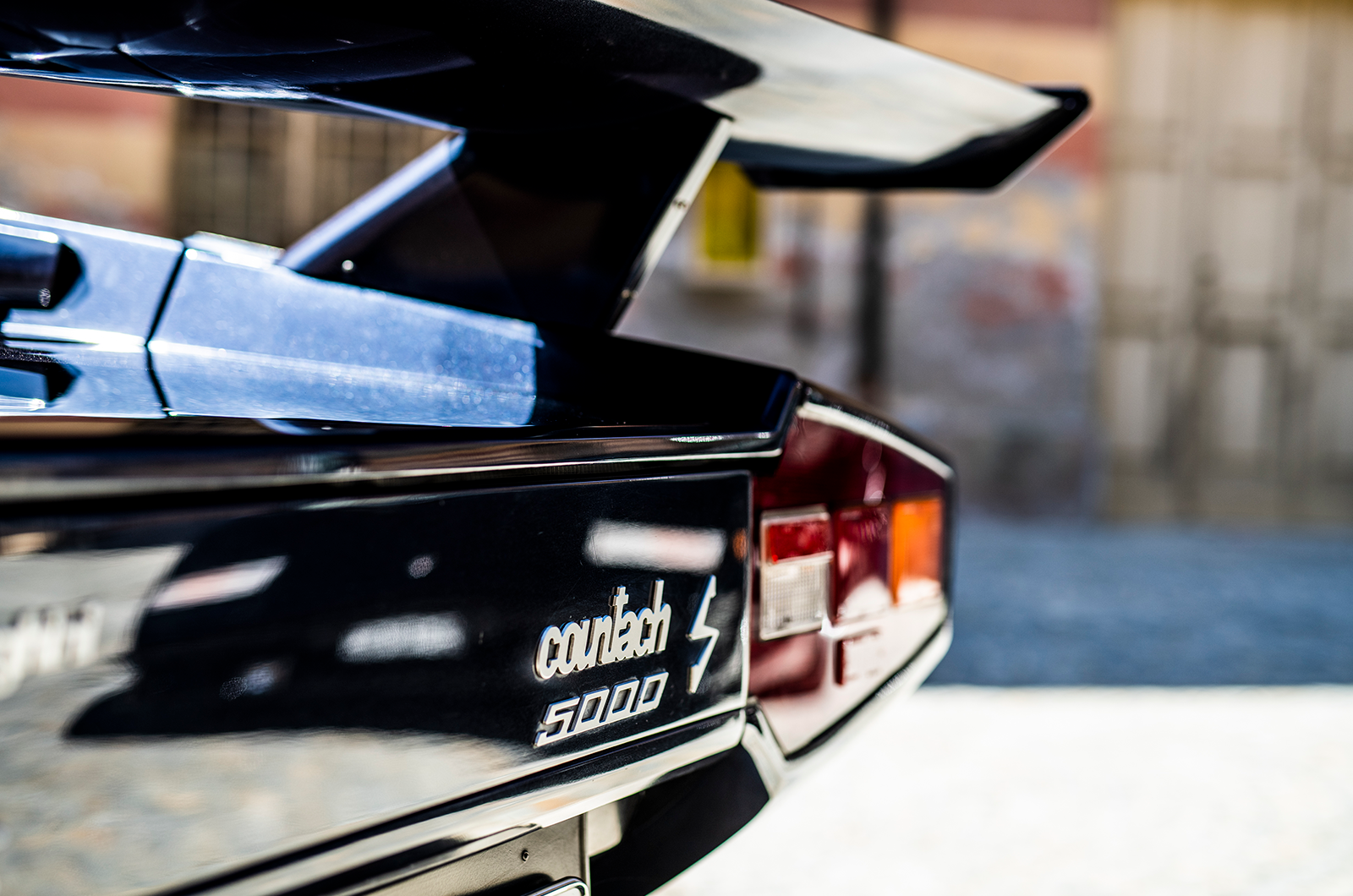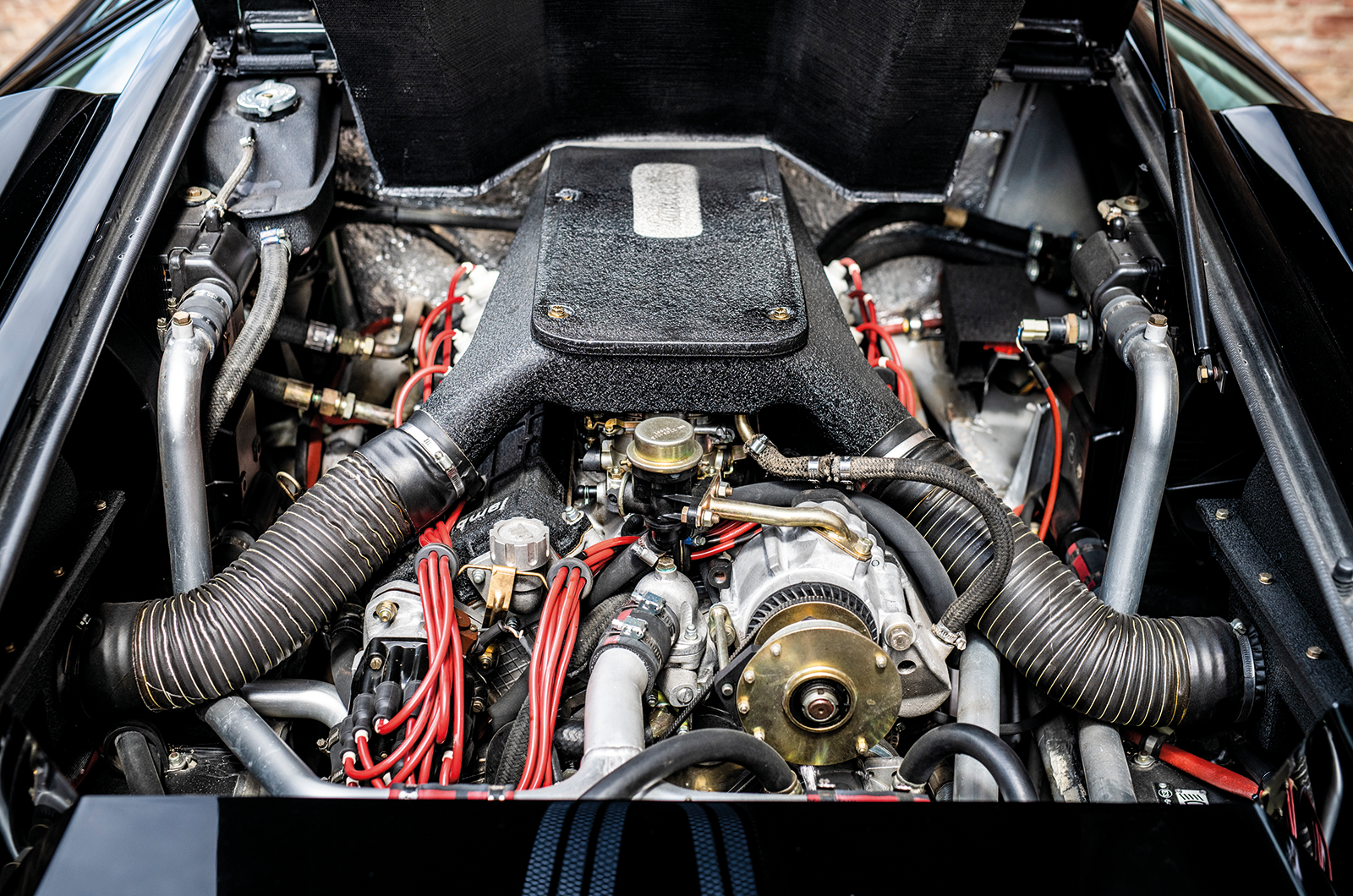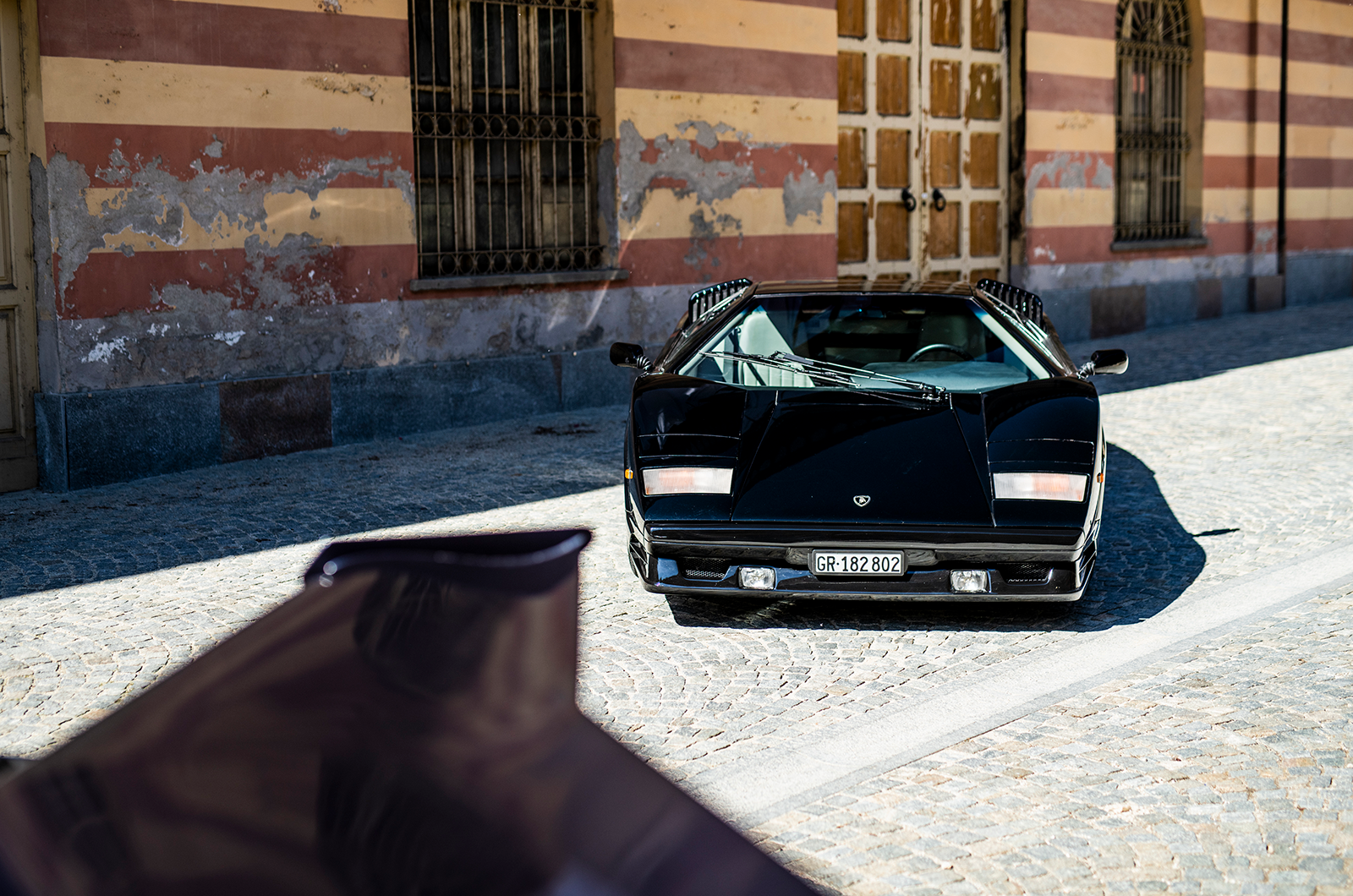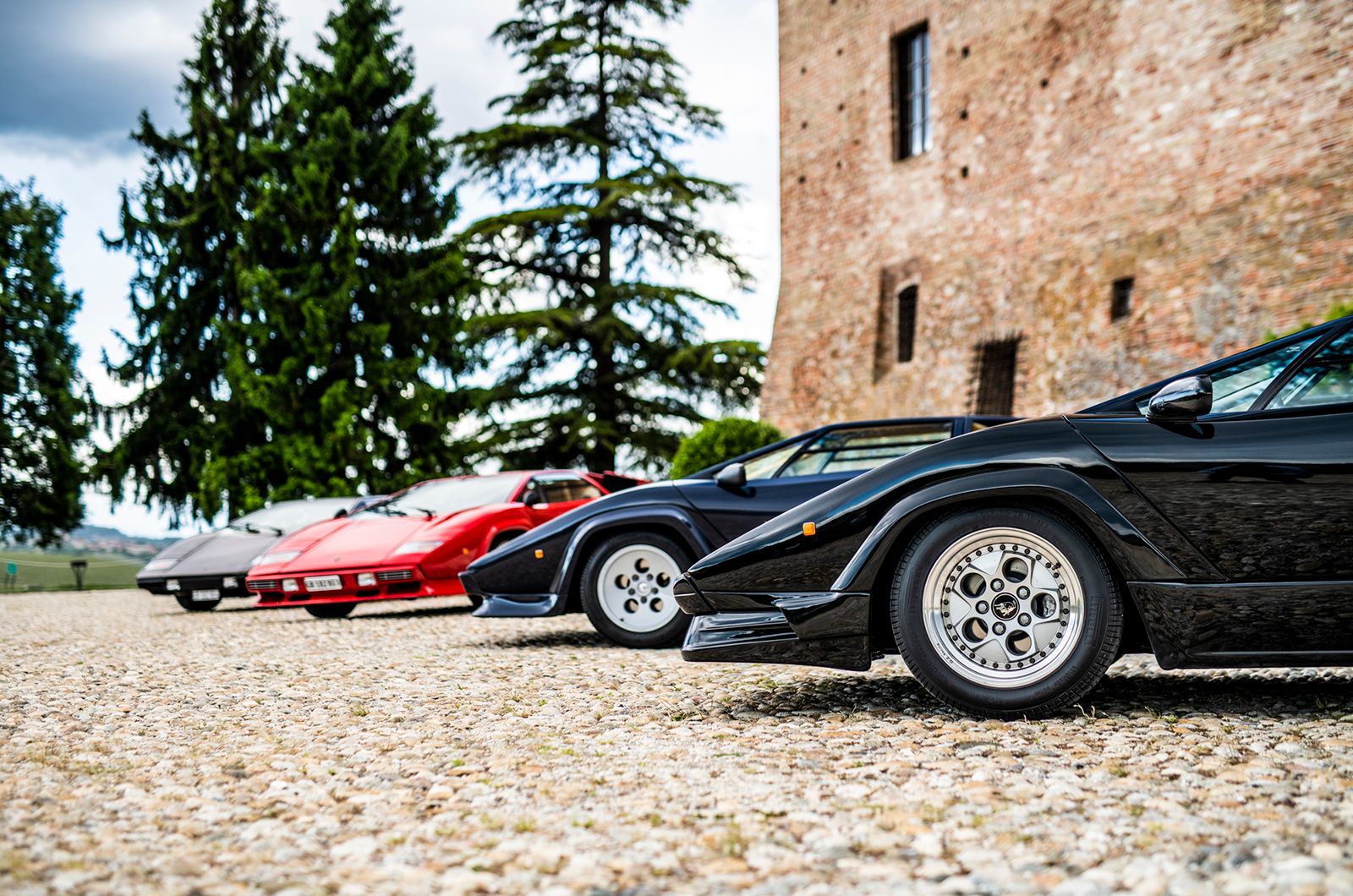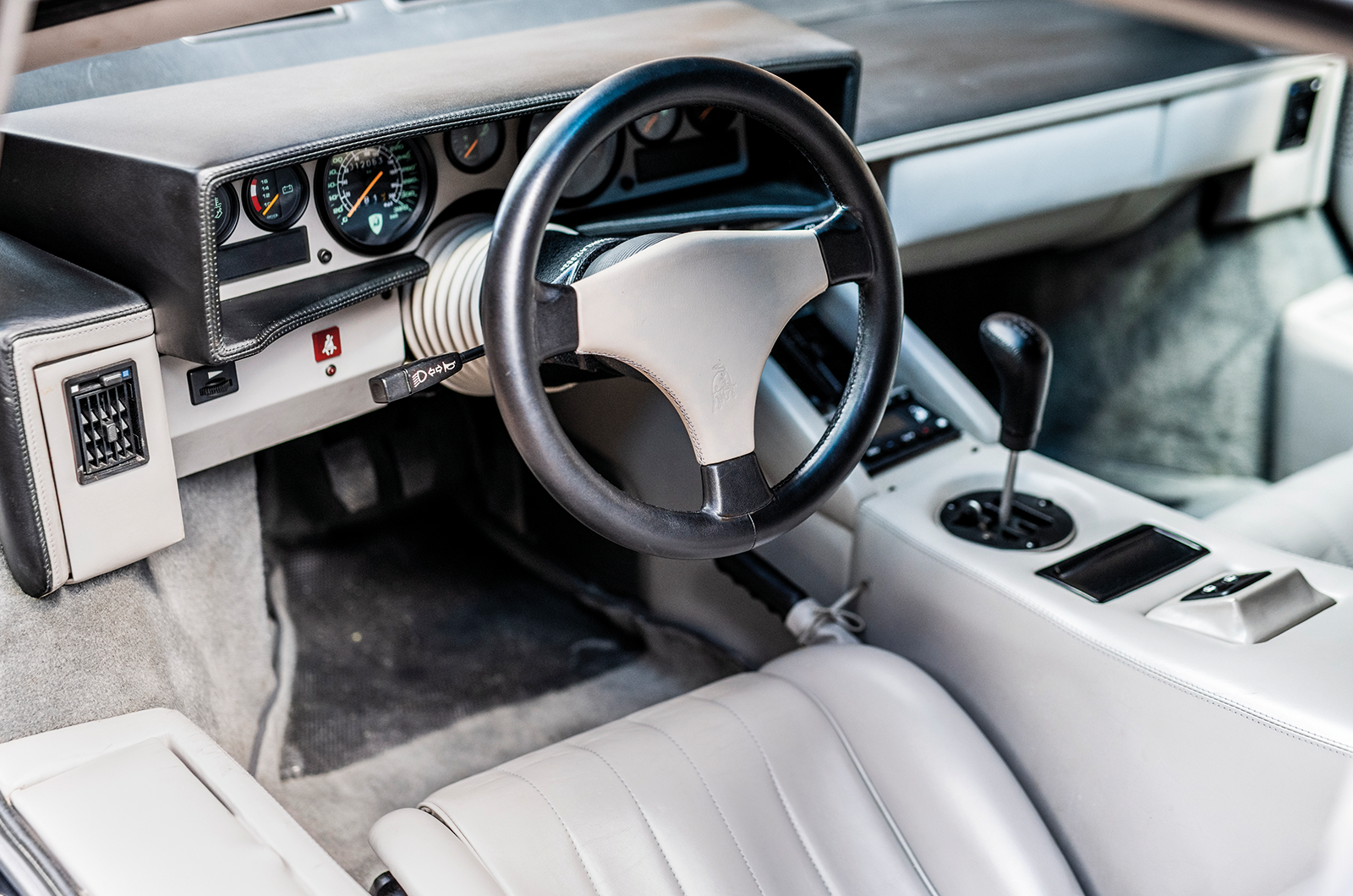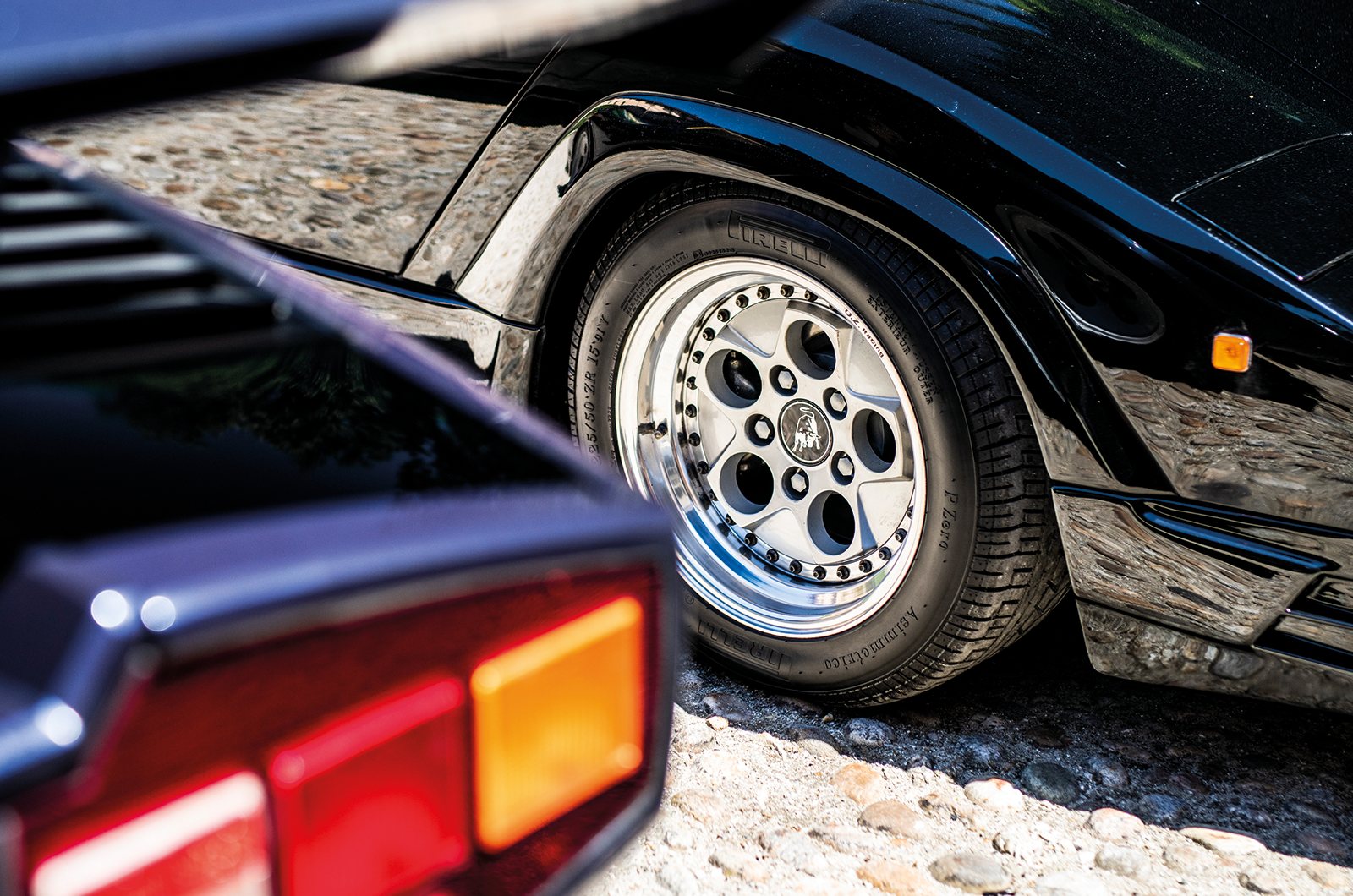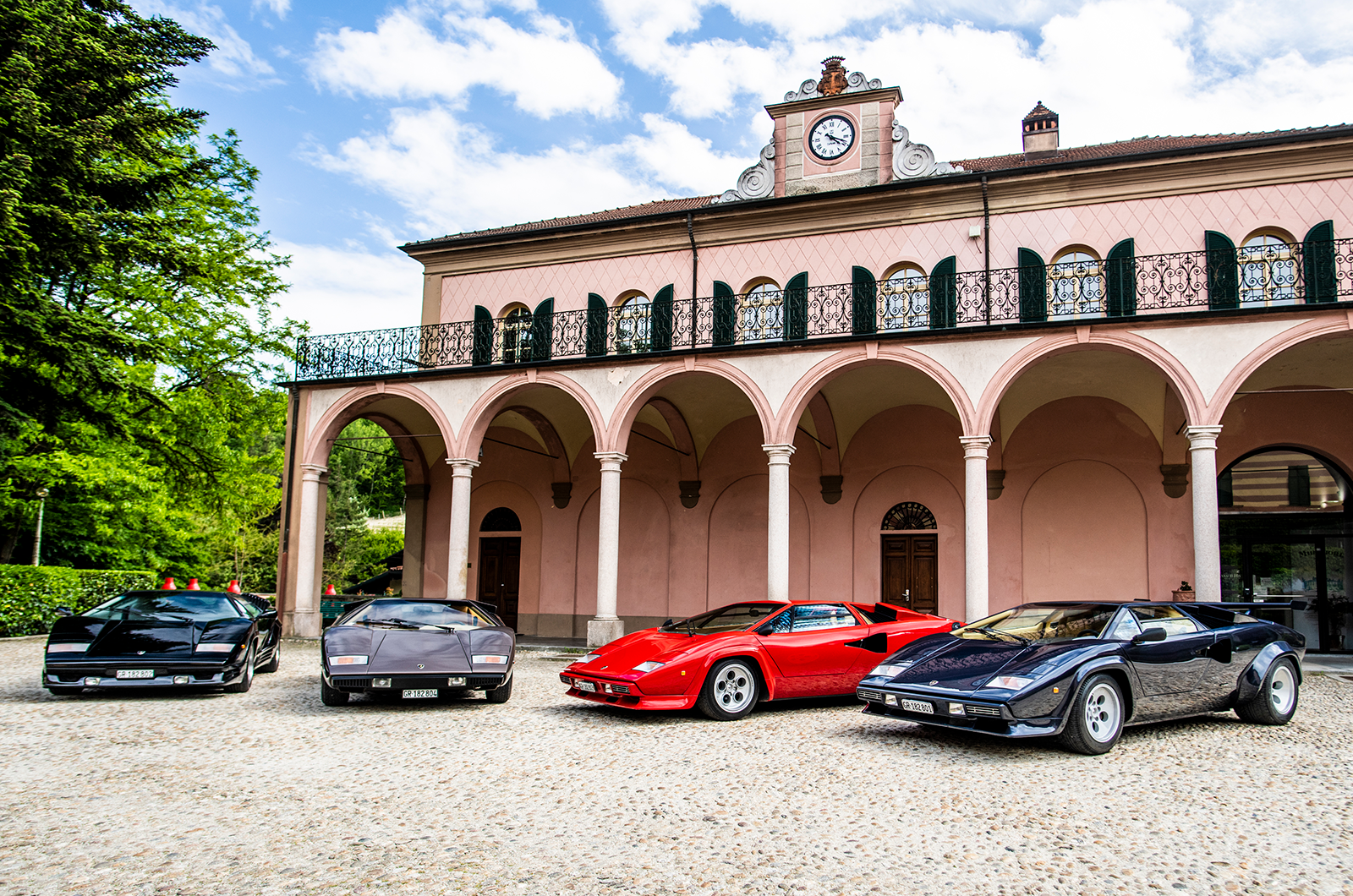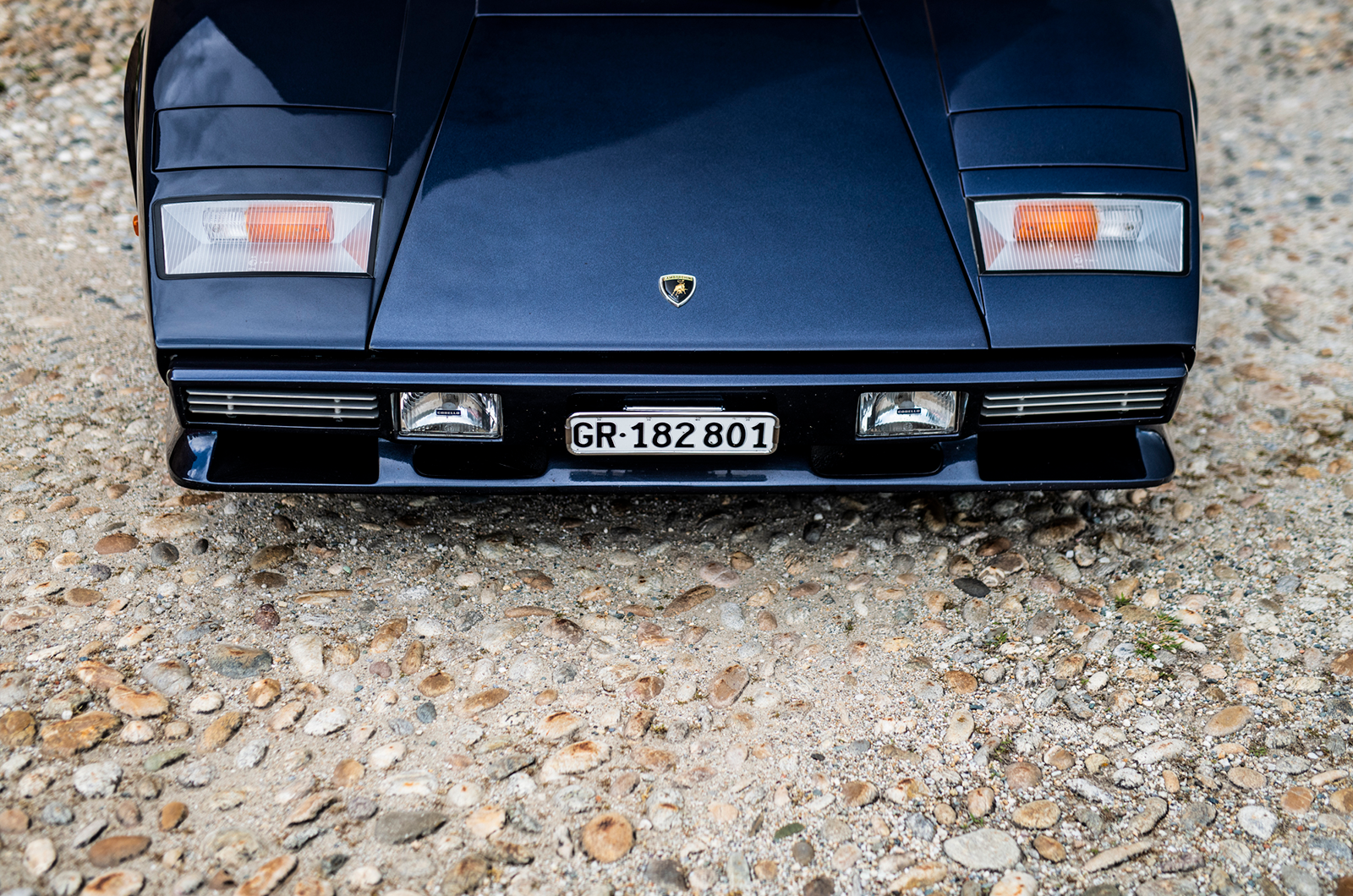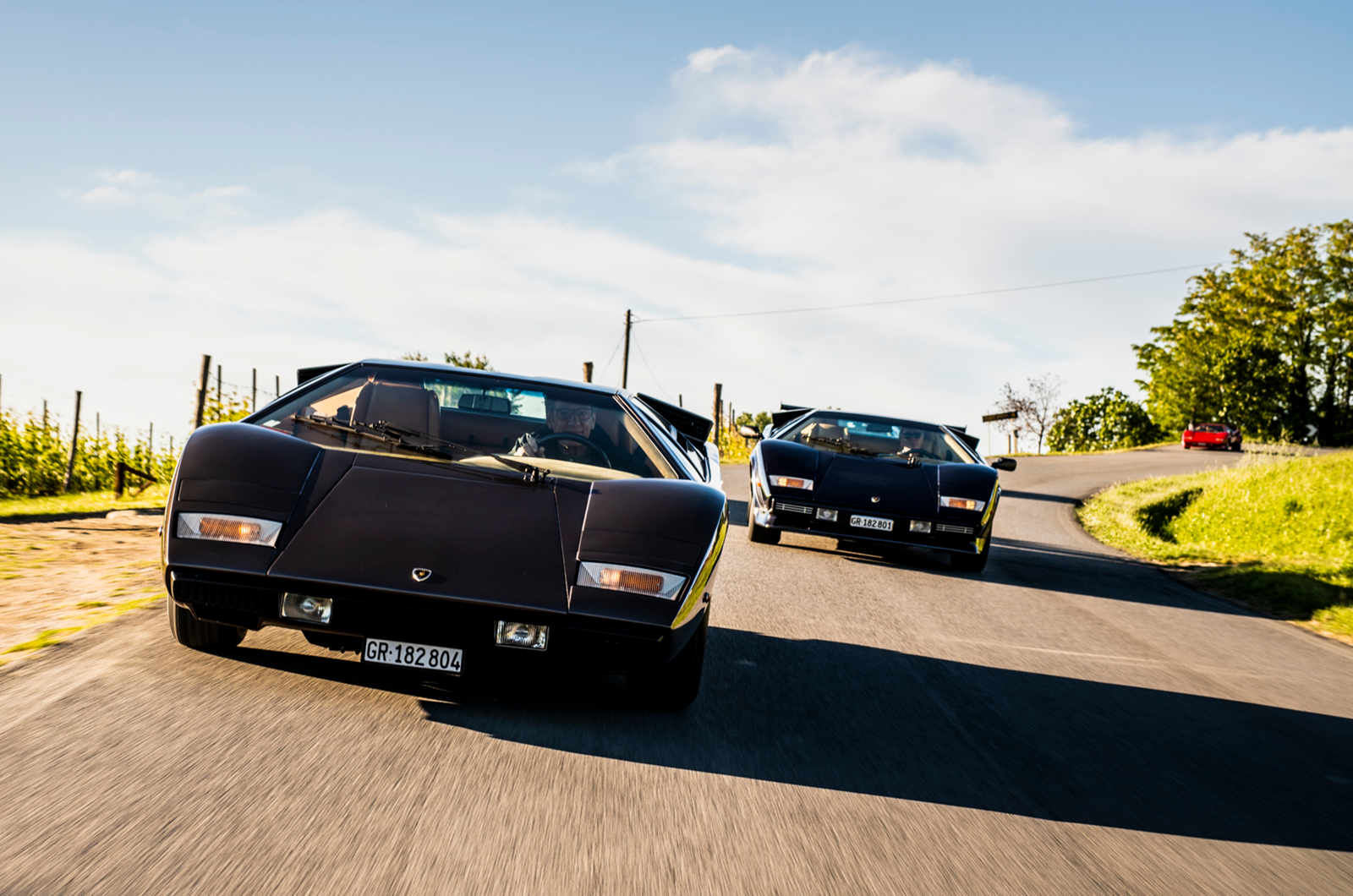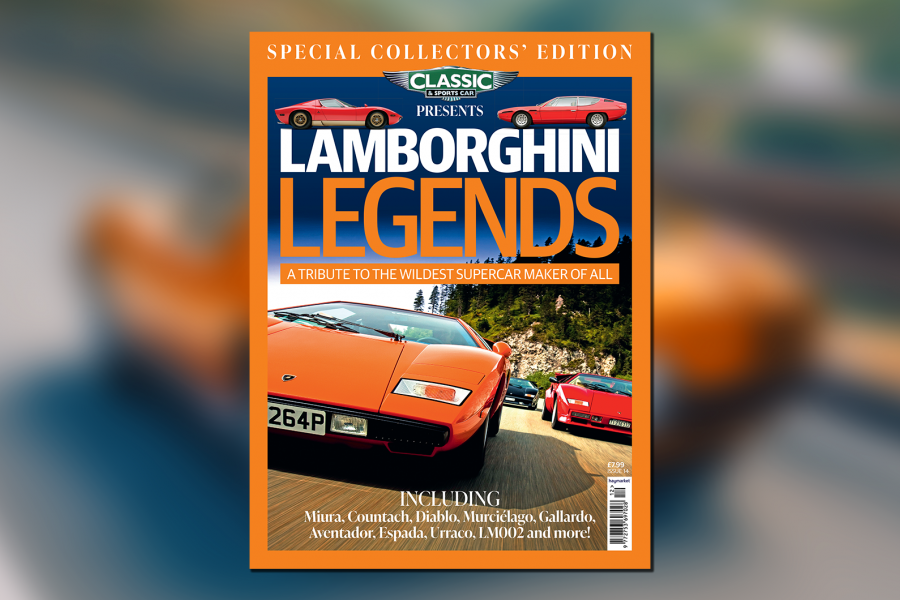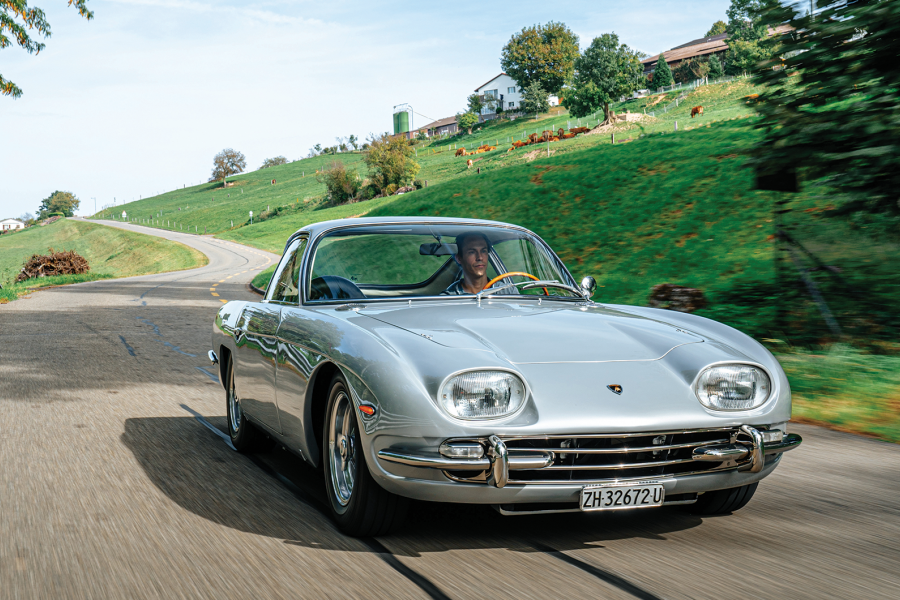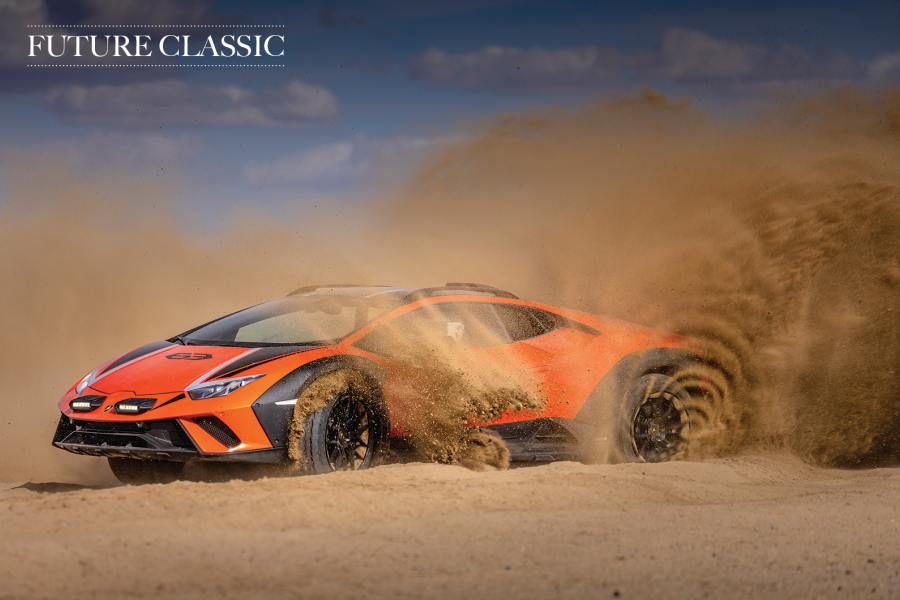The steering, though, is a revelation. It is even better than that of the earlier car, with an immediacy that takes your breath away.
The beefier wheel doesn’t writhe in your hands; it doesn’t feel edgy. The massive four-piston braking set-up is bruisingly effective.
It’s worth recalling that, by the dawn of the 1980s, Lamborghini appeared to be heading for the embalming table.
Yet despite its zero-capital existence, it revealed the LP500S (aka 5000S) in 1982.
Thanks in part to the engineering nous of Maserati exile Giulio Alfieri, the Countach maintained its relevance in the supercar firmament, the V12 receiving an increase in bore and stroke for 4753cc, a lower compression ratio and larger Weber 45DCOE carbs.
It was finally Federalised for the Stateside market, too.
Finished in Bleu Acapulco, ‘our’ 1984 example is physically akin to the LP400S, the cabin architecture also being carried over virtually unchanged save the instrument layout within the rectangular binnacle.
The gauges were repositioned for this iteration in order to make them equally difficult to read, but for different reasons.
It also has air-con, which was an option but should have been mandatory because the cabin may as well be hermetically sealed.
Given that this variant was taller-geared and a bit heavier than its predecessor, you would be hard pressed to tell the difference.
It still feels blisteringly quick, with 0-60mph taking an alleged 4.8 secs. These days that doesn’t seem all that fast but, as before, it’s the way the Countach accelerates that impresses.
And, unlike so many modern supercars with their flat-plane-crank parps, it sounds choral.
At about 3000rpm it starts to clear its throat. Between 3500 and 5500rpm it is in full voice. In theory you can rev it to 8000rpm, but somewhere south of that you struggle to hold a conversation.
Like the LP400S it has massive levels of grip, the same immense stopping power and super-quick steering.
The only discernible difference is the more evenly weighted throttle pedal, which makes for easier modulation.
It is still a decidedly old-school supercar, with all that entails, but things really got interesting with the car that followed: the quattrovalvole.
Ferrari had fought back with the Testarossa that arrived in 1984, reputedly with 390bhp.
Lamborghini responded in double-quick time, with Alfieri conjuring a trick head with four valves per cylinder for the V12 while also raising displacement to 5167cc.
Together with a selection of other mods, this revised unit produced a genuine 455bhp at 7000rpm and an elephantine 369lb ft of torque at 5200rpm.
Introduced at the 1985 Geneva Salon, the new strain truly delivered.
However, Lamborghini wasn’t done: witness the 25th Anniversary edition.
Work began on this most radical take on the theme shortly after Chrysler acquired the Sant’Agata firm in June 1987, and even now it continues to polarise opinion.
Nevertheless, it was the best-selling variant of all, with 660 finding homes from 1988-’90.
The car pictured here looks decidedly sinister in black, and there is no getting away from the fact that it is very much a product of its era.
Horacio Pagani headed the team responsible for the makeover and every supercar styling cliché was thrown at the Countach. Most of them stuck.
The front bumper/spoiler, complete with the obligatory strakes, looks relatively tame.
The cooling scoops atop the rear deck, which run all the way to the revised tail-light clusters (as previously employed on US-spec cars), rather less so.
Then there are the side skirts with yet more strakes, plus the chunky rear bumper.
The sense of whimsy continues inside.
While not what you might describe as luxurious, the last-of-the-line model features wider, motorised seats so you can find a slightly less challenging driving stance.
Oh, and for reasons we haven’t quite been able to work out, the toll-booth-only windows are electrically operated.
However, the 25th Anniversary is a riot to drive thanks in no small part to the 48-valve engine.
It sounds that bit smoother than previous iterations, but it’s still far from discreet.
It’s all induction roar and exhaust fanfare overlaid with a high-pitch whine from the gears. Drive one and you will swear you can hear each and every firing stroke.
Inevitably, it too suffers from a less than limousine-like ride. With no rubber insulation, you wouldn’t expect it to, but the 25th Anniversary feels more affected by topographical nastiness than its older siblings.
While suspension changes over its predecessor were relatively subtle, being related for the most part to the adoption of more modern Pirelli P Zero rubber, it does have a tendency to tramline.
It will understeer determinedly through low-gear bends although the steering, as with the others, is beautifully metered.
And the brakes remain reassuringly strong, without threatening to fade.
With the Countach, Lamborghini stuck to the attitude of ‘if it ain’t broke, don’t fix it’.
And even if it is a bit broke, you’re probably better off not messing about with it too much.
It was the right approach, even if it was thrust upon the firm by circumstance. The Countach was – and remains – a toweringly capable car that outlived its natural lifespan.
It was conceived in 1969 while Ferruccio Lamborghini was still very much in charge, withstood serial ownership and insolvency, took a turn for the brilliant under the stewardship of the Mimran family and enjoyed one final hurrah under Chrysler.
It became ingrained in pop culture, too, which puts it in rarefied company.
The Countach provided children of the 1970s and ’80s with the opportunity to while away time arguing about how to pronounce its name correctly. For that, we remain forever grateful.
As it celebrates its 50th birthday, it’s worth recognising that the Countach isn’t the best supercar to turn a wheel. Not even close.
It is, though, a candidate for the greatest. It is a subtle distinction, but a salient one nonetheless.
Images: Rémi Dargegen
A legend speaks: Marcello Gandini on the birth of the Countach
Marcello Gandini was – and remains – a colossus of car design. Famously reticent about discussing his career, he nevertheless has great affection for the Countach.
“It was done in very little time,” he recalls. “Ferruccio Lamborghini wanted to create something to replace the Miura. It had to be something advanced and revolutionary to show how Automobili Lamborghini was orientated towards the future.
“We, at Bertone, were ready to fulfil his request, the new styling trend that comprised squarer lines and surfaces being something we were familiar with.”
“The main difference, though, and full credit has to go to Lamborghini, is that the Countach entered production while other concept cars did not,” he continues.
“It represented about eight months’ work prior to the LP500 being shown in Geneva [in March 1971]. We were up against the clock the whole time, but that was perfectly normal.
“With the exception of the technical layout, and Ferruccio’s wish for something innovative, I was given completely free rein. The original prototype [above] was the most beautiful Countach, but it needed some modification to become a real road car. The changes weren’t too invasive.”
As for the origins of the Countach name, Gandini says: “That word, with the emphasis on the last two letters, is an exclamation in Piedmontese dialect.
“It literally means ‘contagious’, but it is used to express positive surprise. It was often uttered by a guy at Bertone who worked on ‘profiling’ the LP500 prototype. It was “Countach” this, “Countach” that.
“I started to joke that we should simply call the car ‘Countach’. [Legendary test driver] Bob Wallace was there, and we checked the pronunciation in English.
“However, what began as a joke became something more serious. I realised that it suited the car perfectly. I persuaded Nuccio Bertone, then Paolo Stanzani and ultimately Ferruccio Lamborghini to use it.”
READ MORE
Lamborghini Miura: The Italian Job reloaded
Family fortunes: Ferrari 400GT vs Lamborghini Espada vs Iso Lele vs Maserati Indy 4200
Open for business: Maserati A6GCS by Frua
Richard Heseltine
Richard Heseltine is a long-time contributor to Classic & Sports Car
